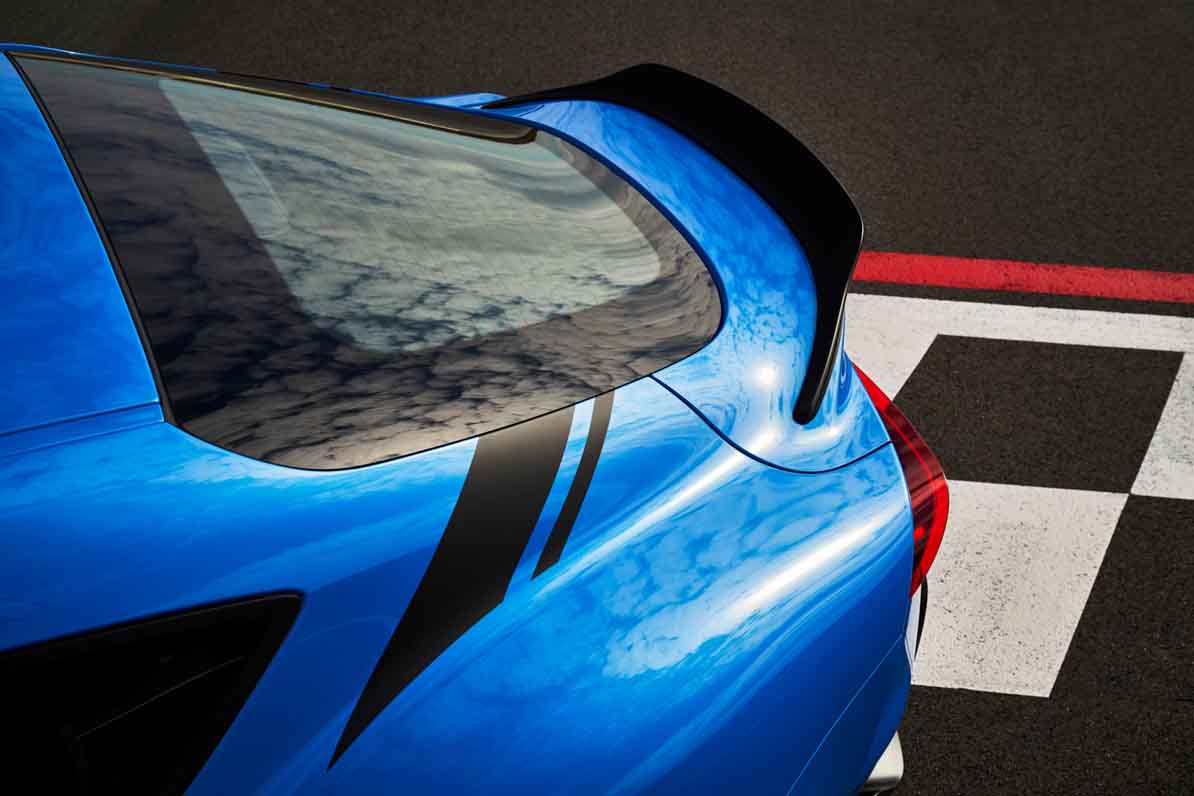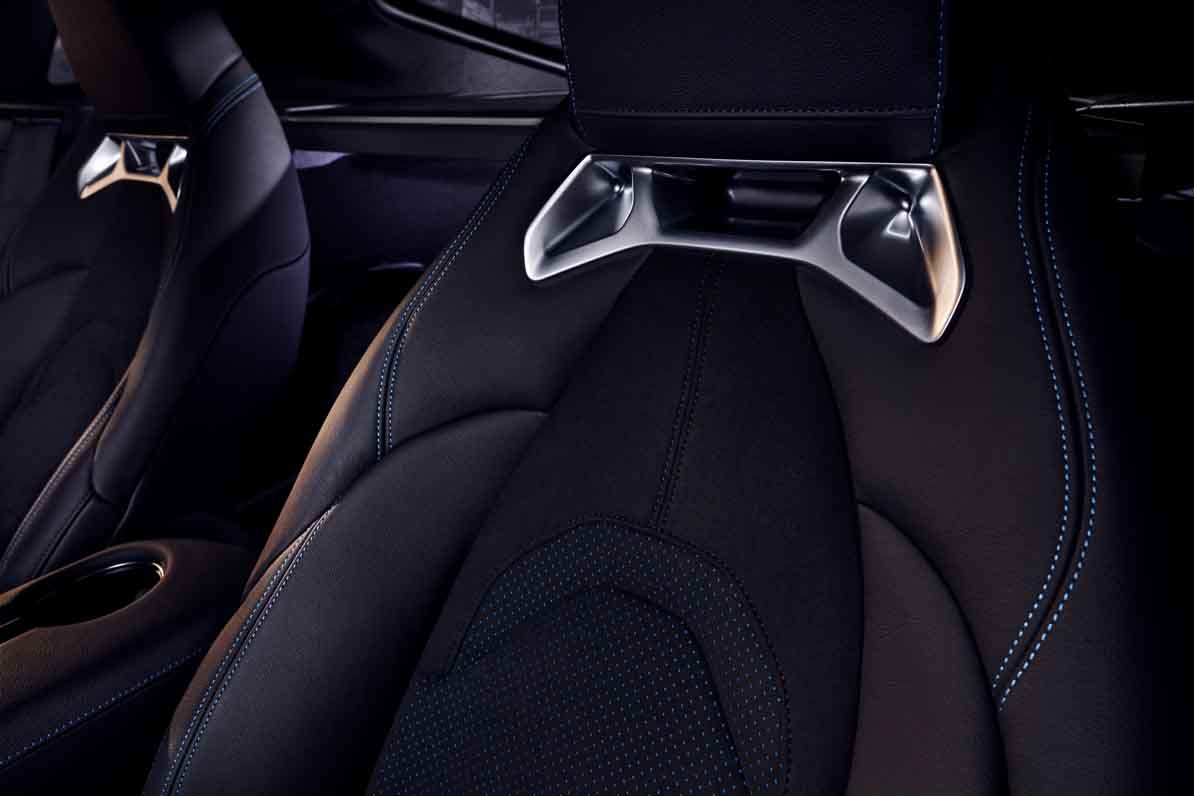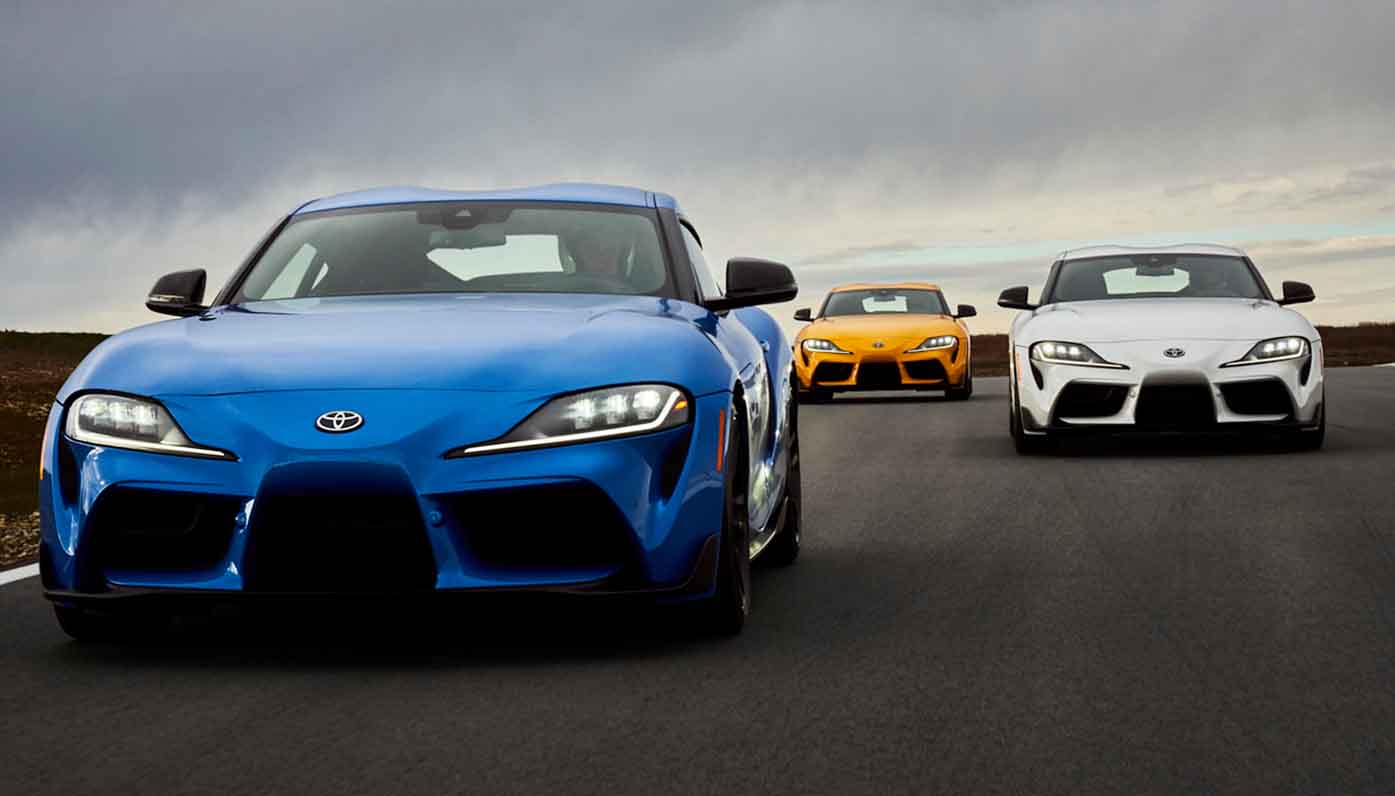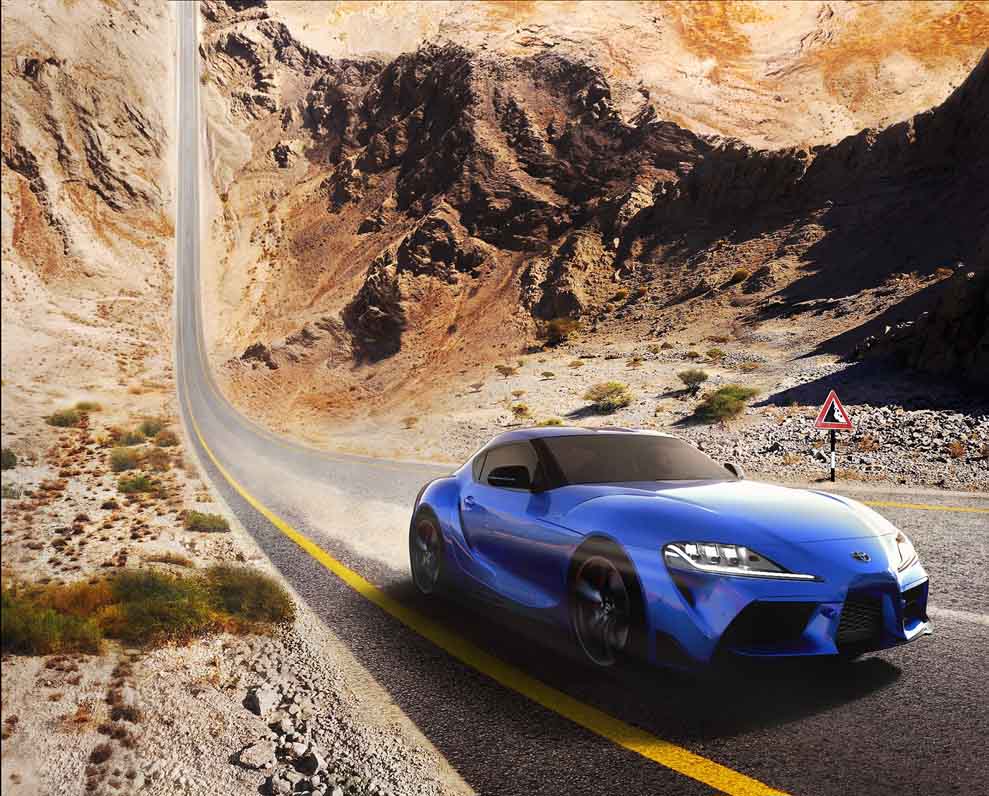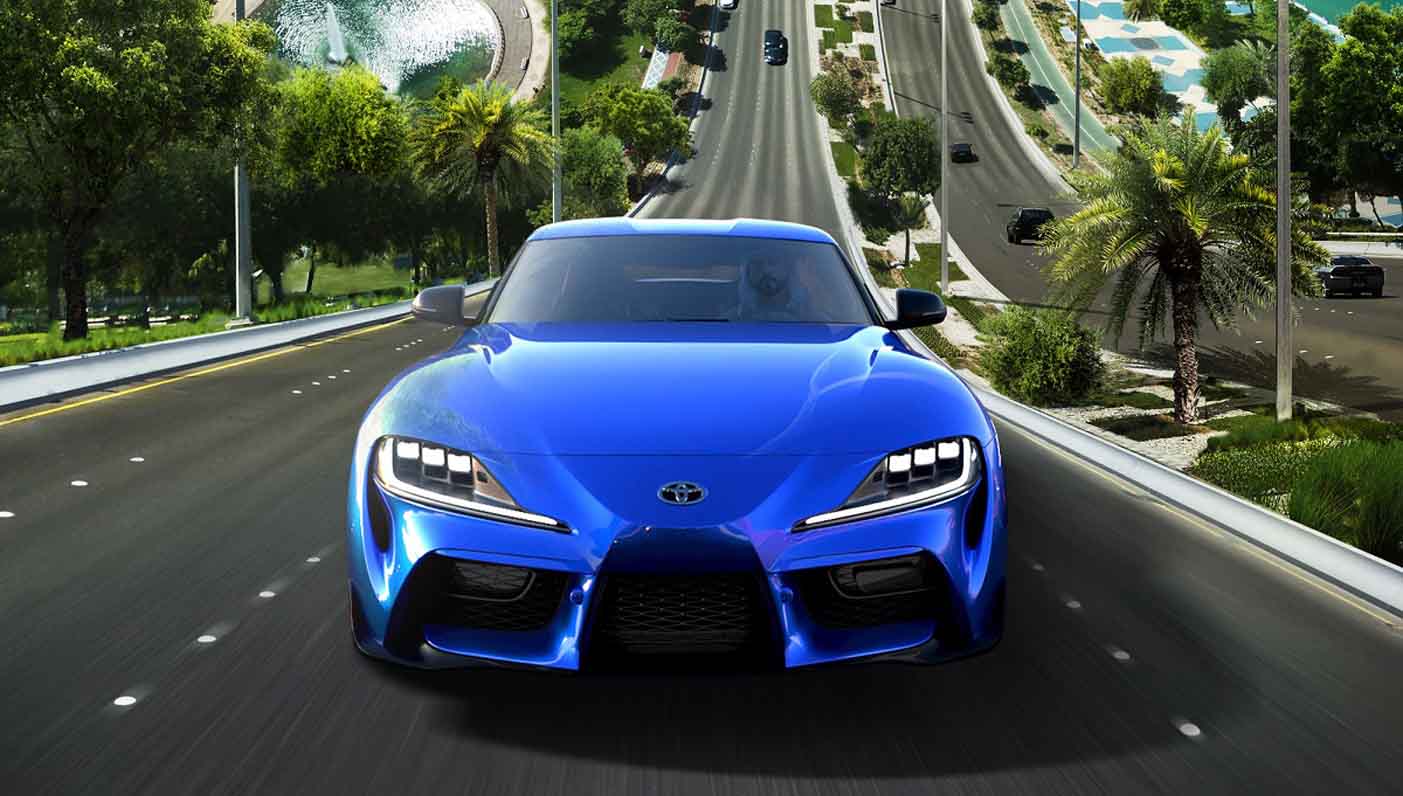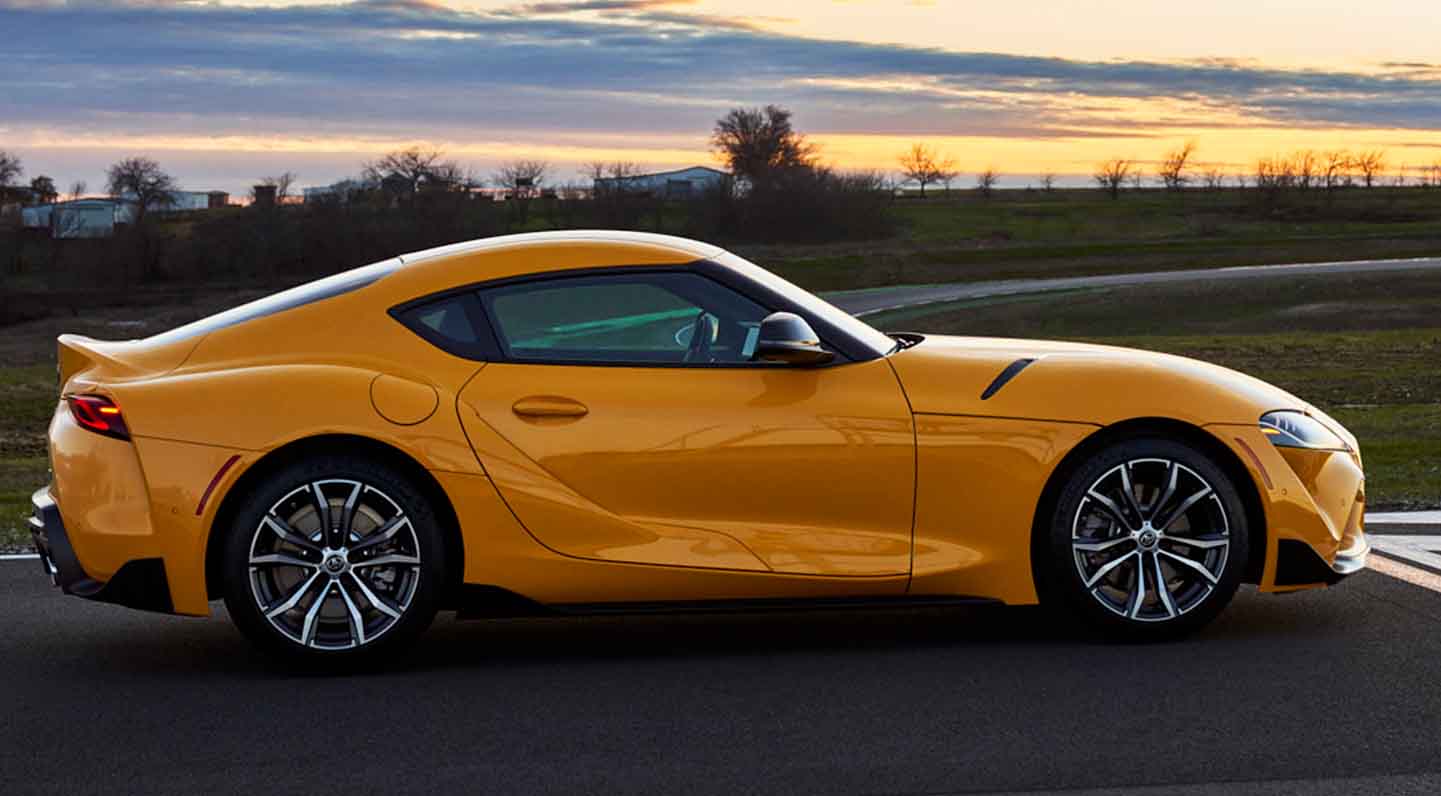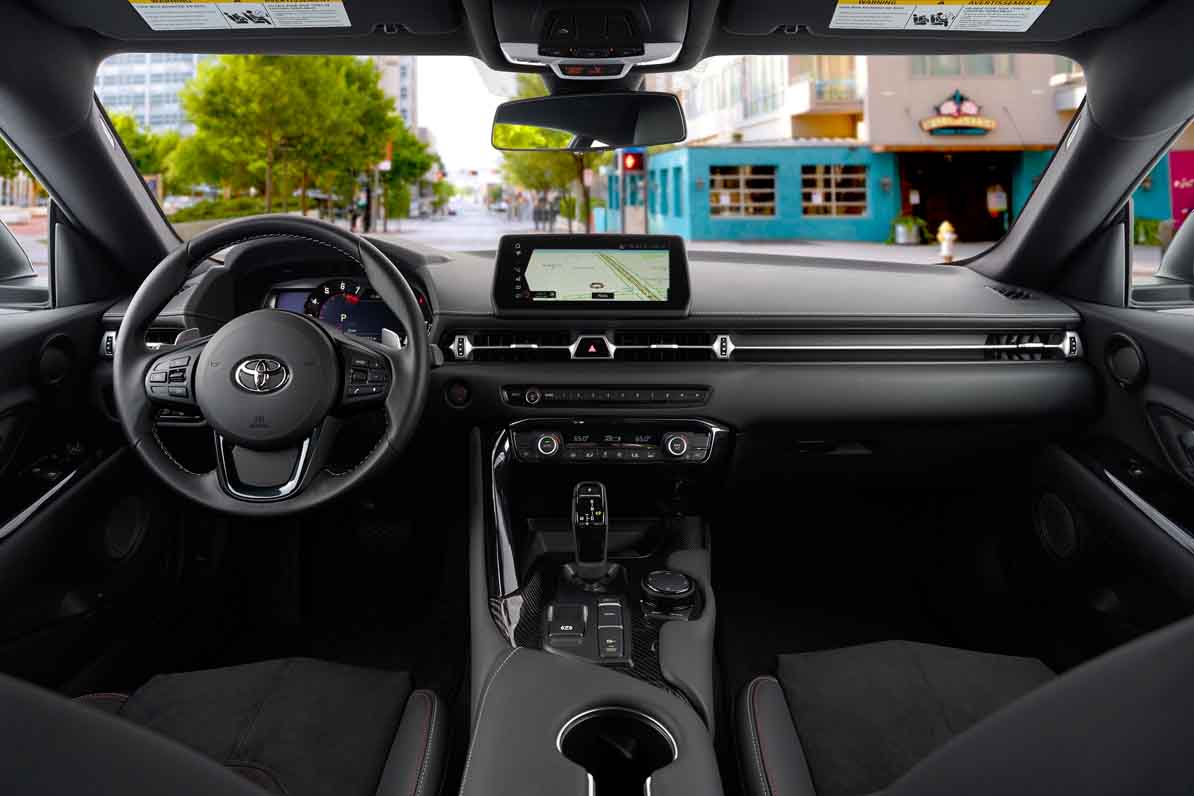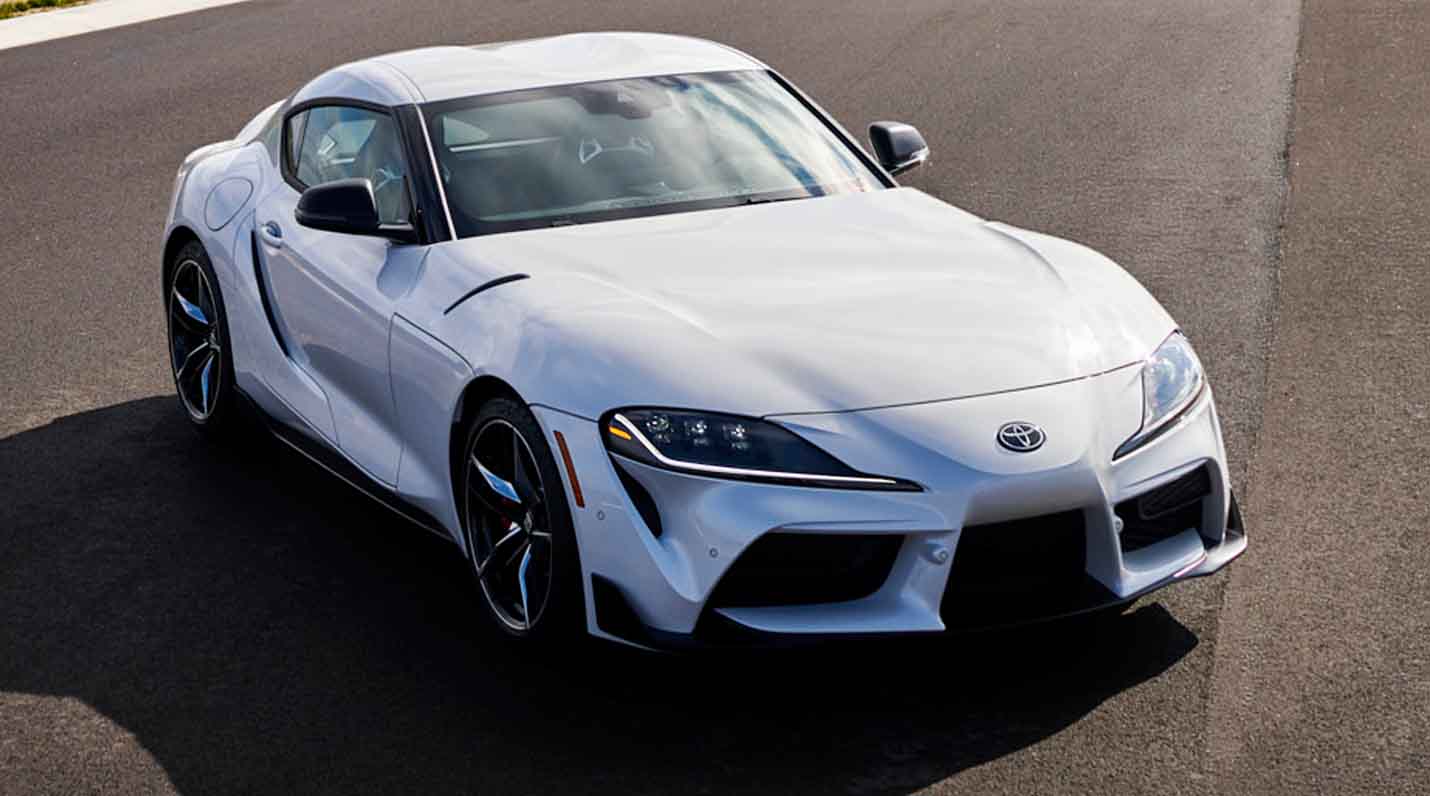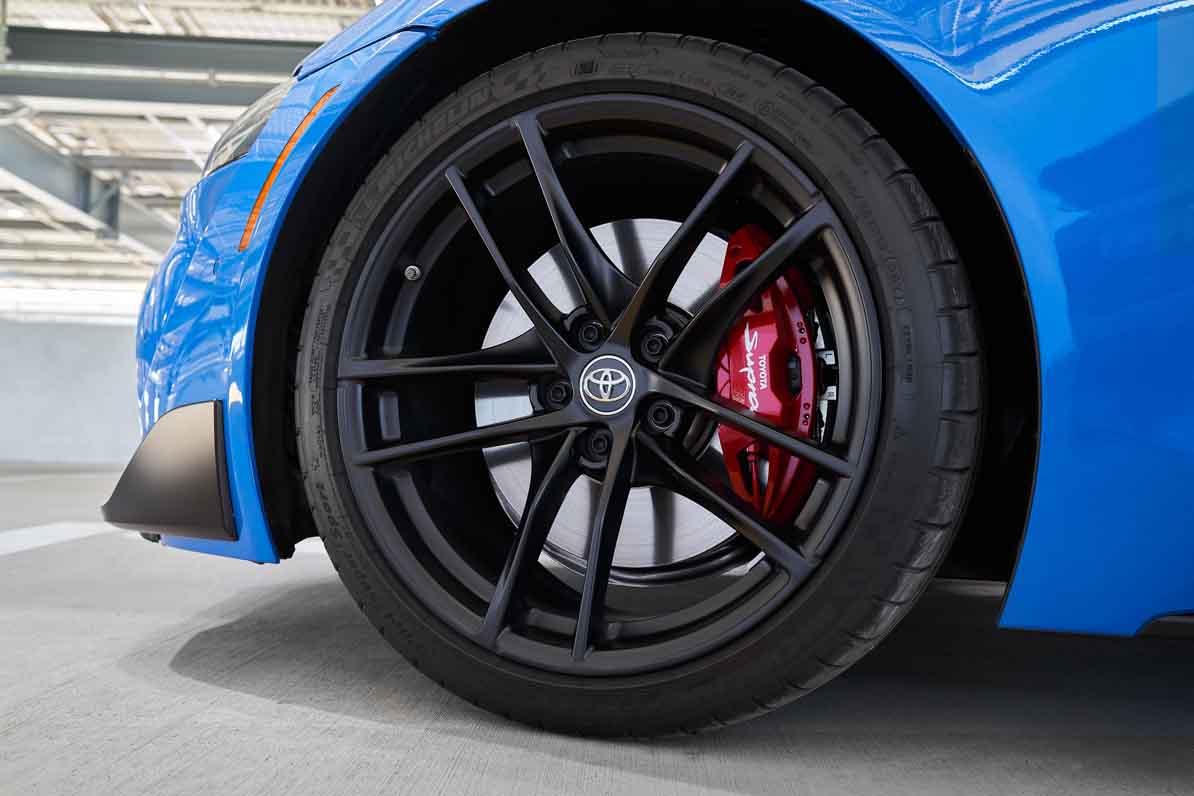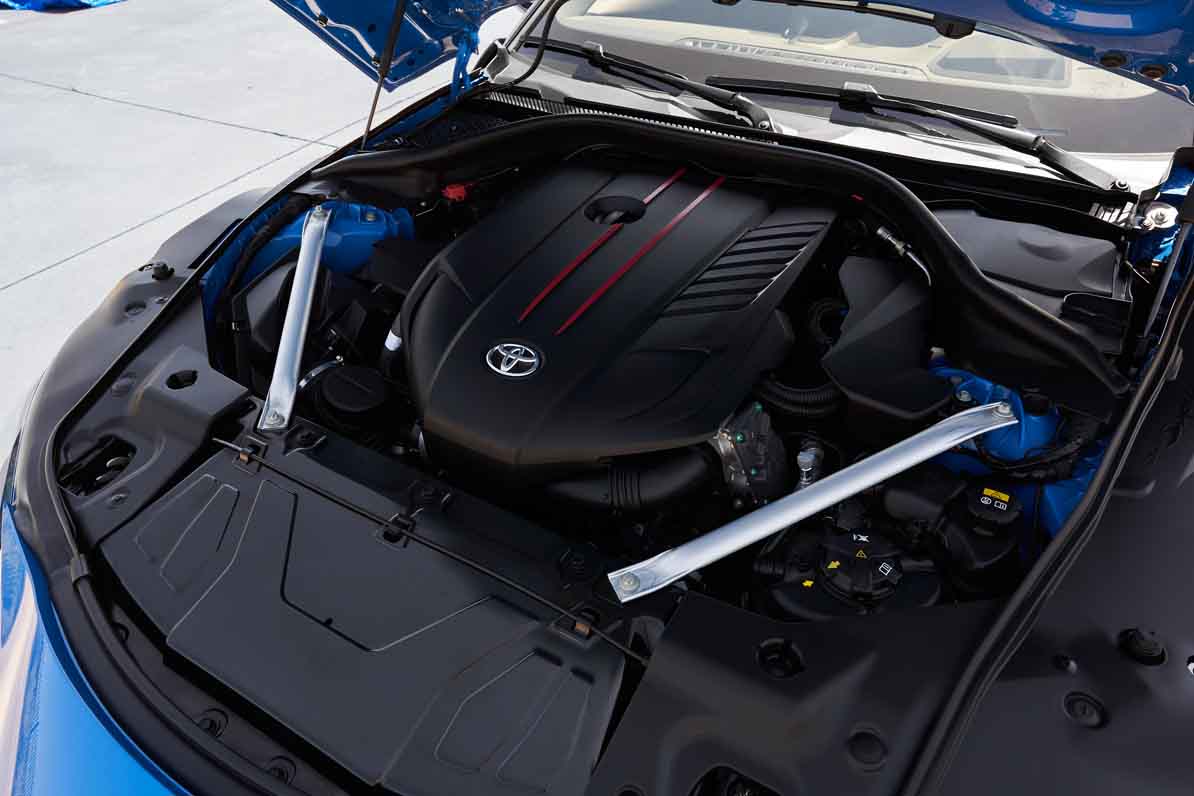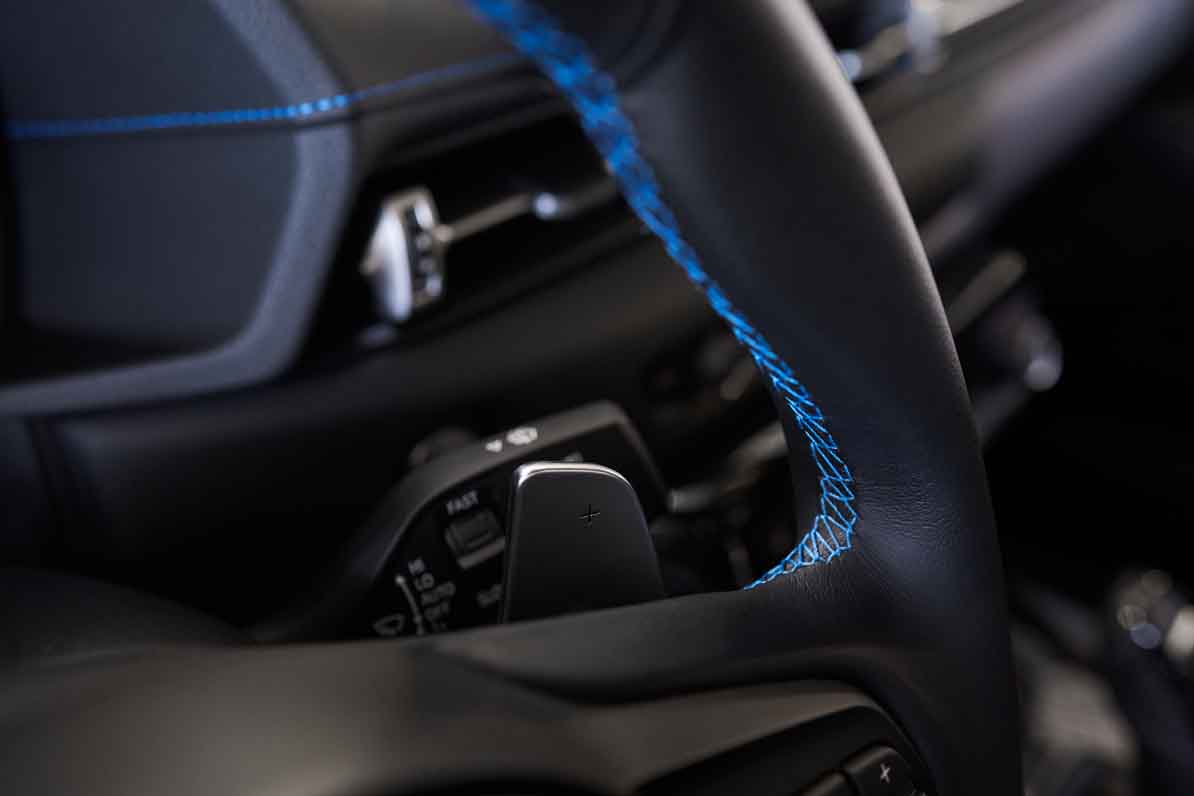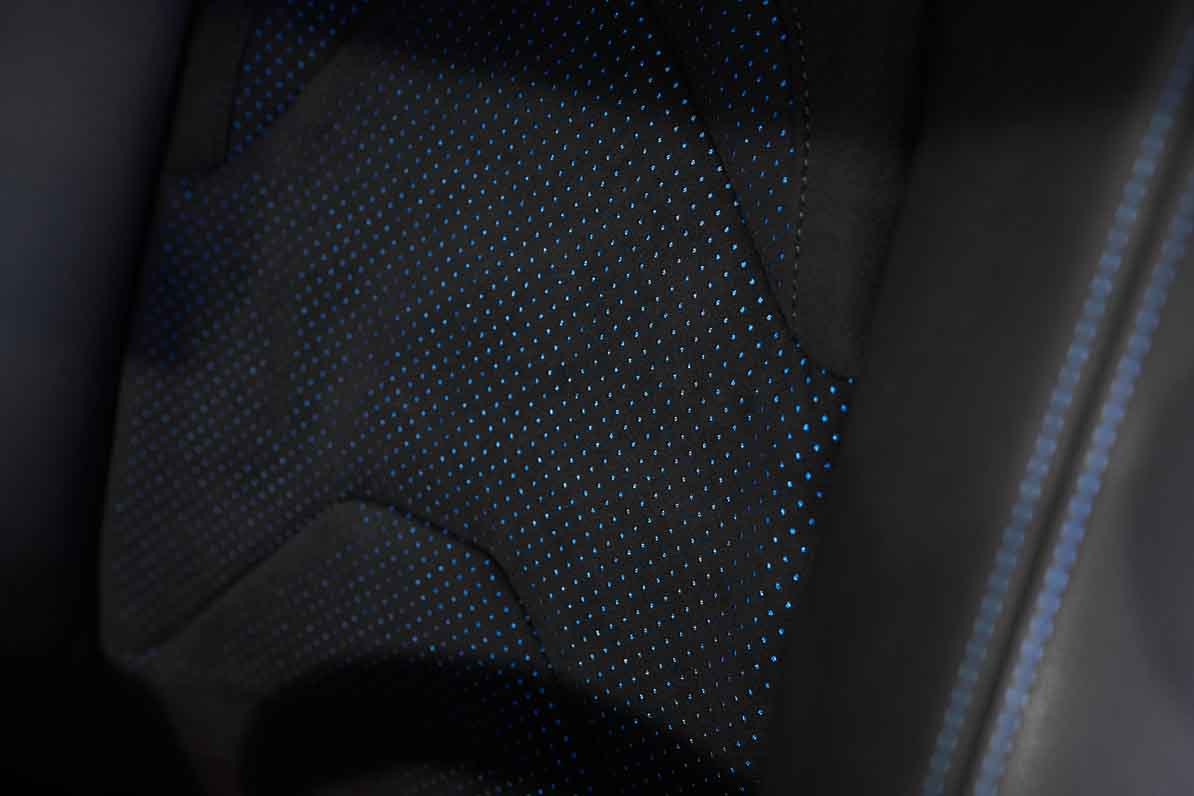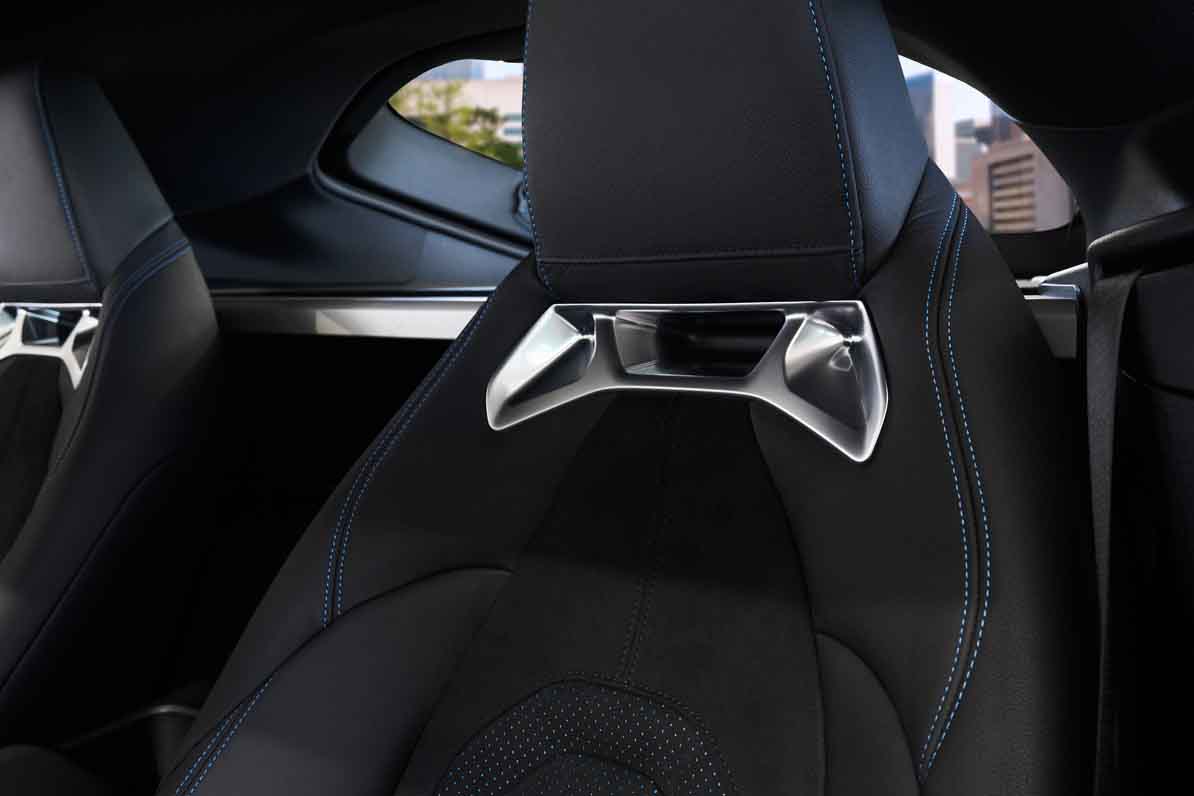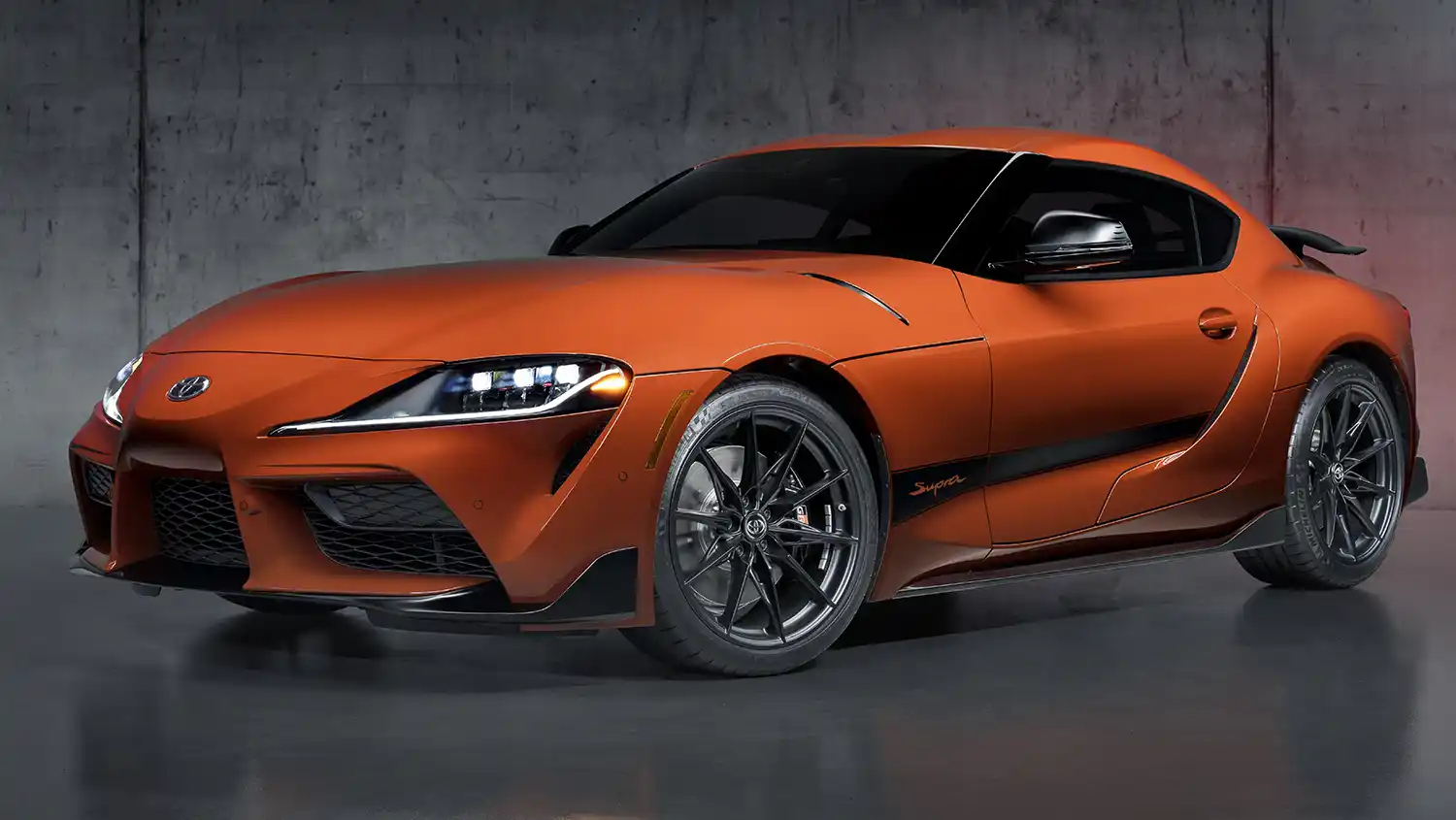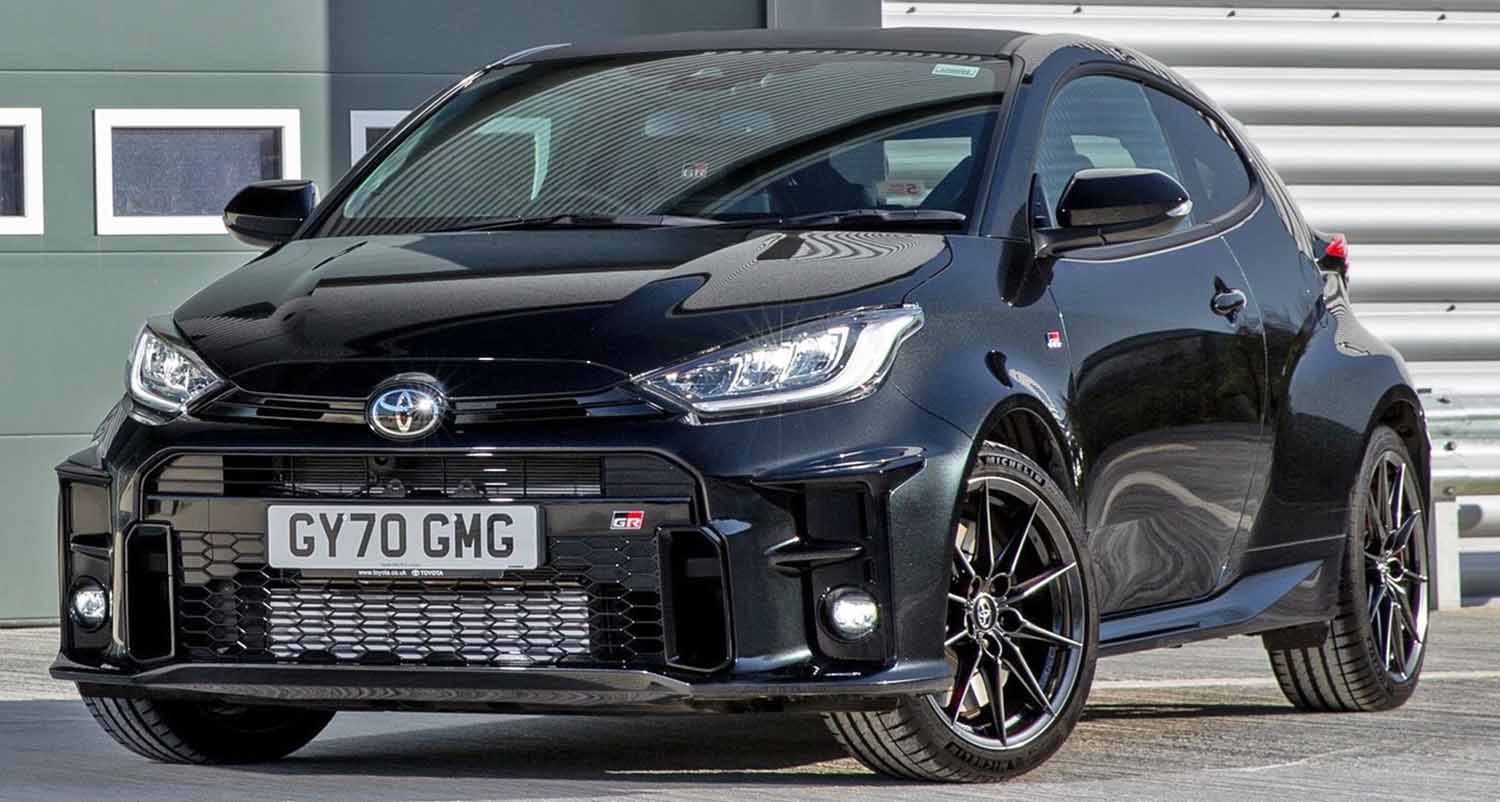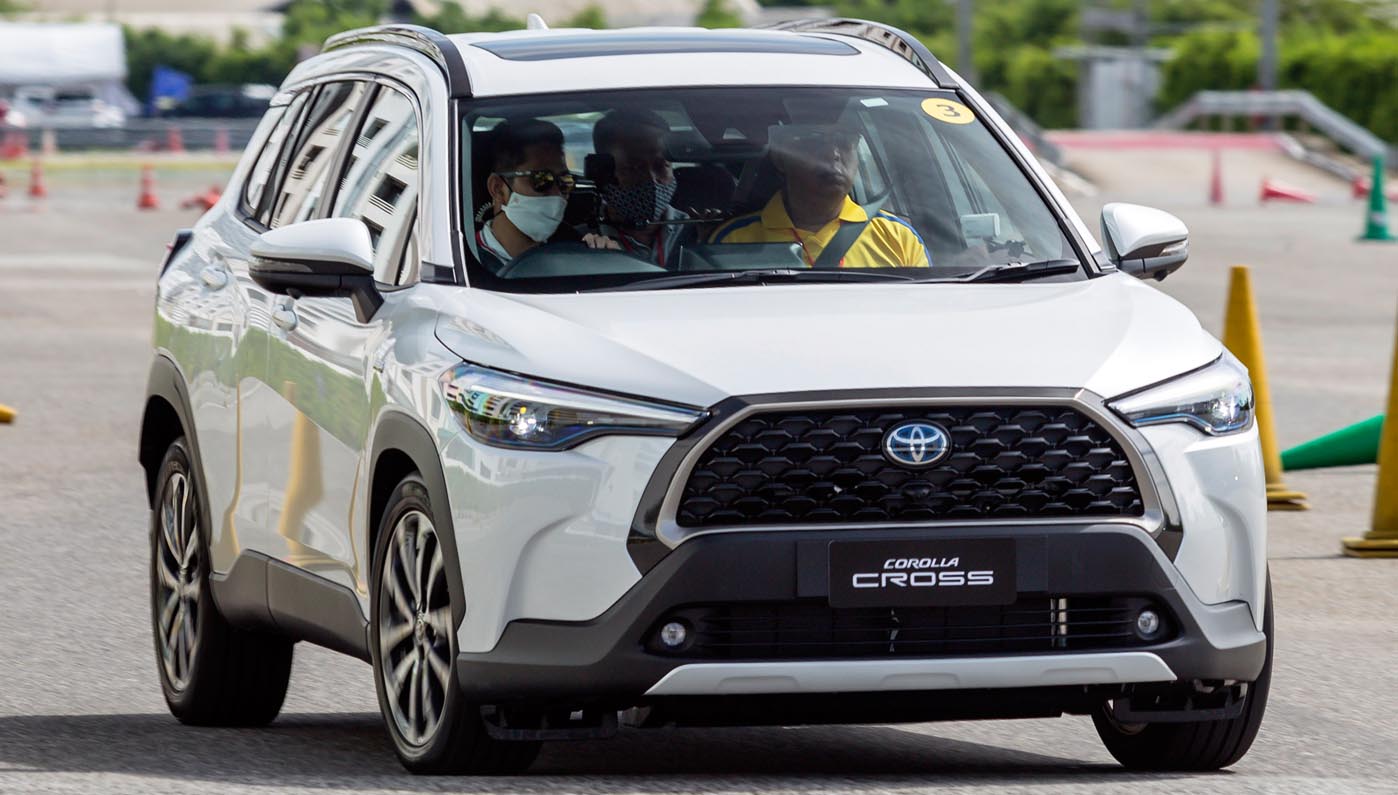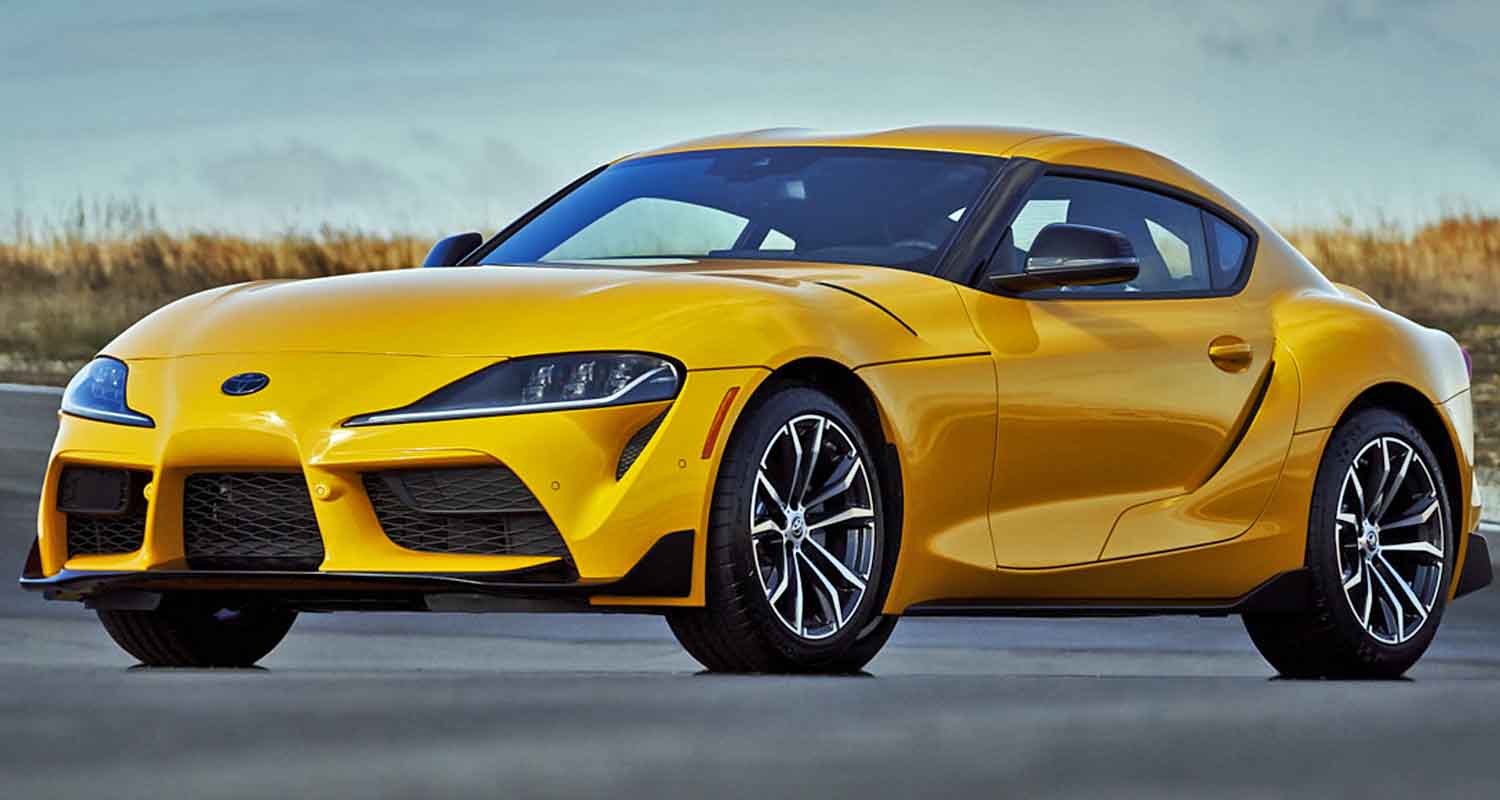
In January 2019, the fifth-generation GR Supra, the first global Toyota GAZOO Racing model, made its undisguised world debut at the North American International Auto Show in Detroit, ending years of anticipation and speculation among sports car enthusiasts around the world. Behind the new Supra is a 50+ year lineage of unique Toyota sports and GT cars. Ahead of it awaits the world’s great driving roads, some of which were used to develop this all-new expression of Toyota pure sports car performance.
The 2020 Supra goes on sale in the US in July 2019 and will be available in two grades – 3.0 and 3.0 Premium – as well as an exclusive Launch Edition based on the 3.0 Premium grade. Driving enthusiasts can look forward to an exhilarating blend of power, precision and agility thanks to a rear-wheel-drive design that honors Toyota sports car heritage with its low center of gravity and optimal weight balance. There is a strong connection to Toyota’s 1967 2000 GT and 1993-2002 Supra in both design and mechanical configuration. Yet, the 2020 Toyota Supra is a fully forward-looking sports car, brimming with a cutting-edge powertrain, chassis and multimedia technology.
By defining specific performance and handling targets early in development, Toyota GAZOO Racing in Japan, with much input from Toyota Motor North America and Toyota Motor Europe, imbued the Supra with its own driving characteristics. While posting the kind of performance numbers that excite enthusiasts, the 2020 Supra will reward drivers of all skill levels with a thrilling sports car feel, even in everyday driving.
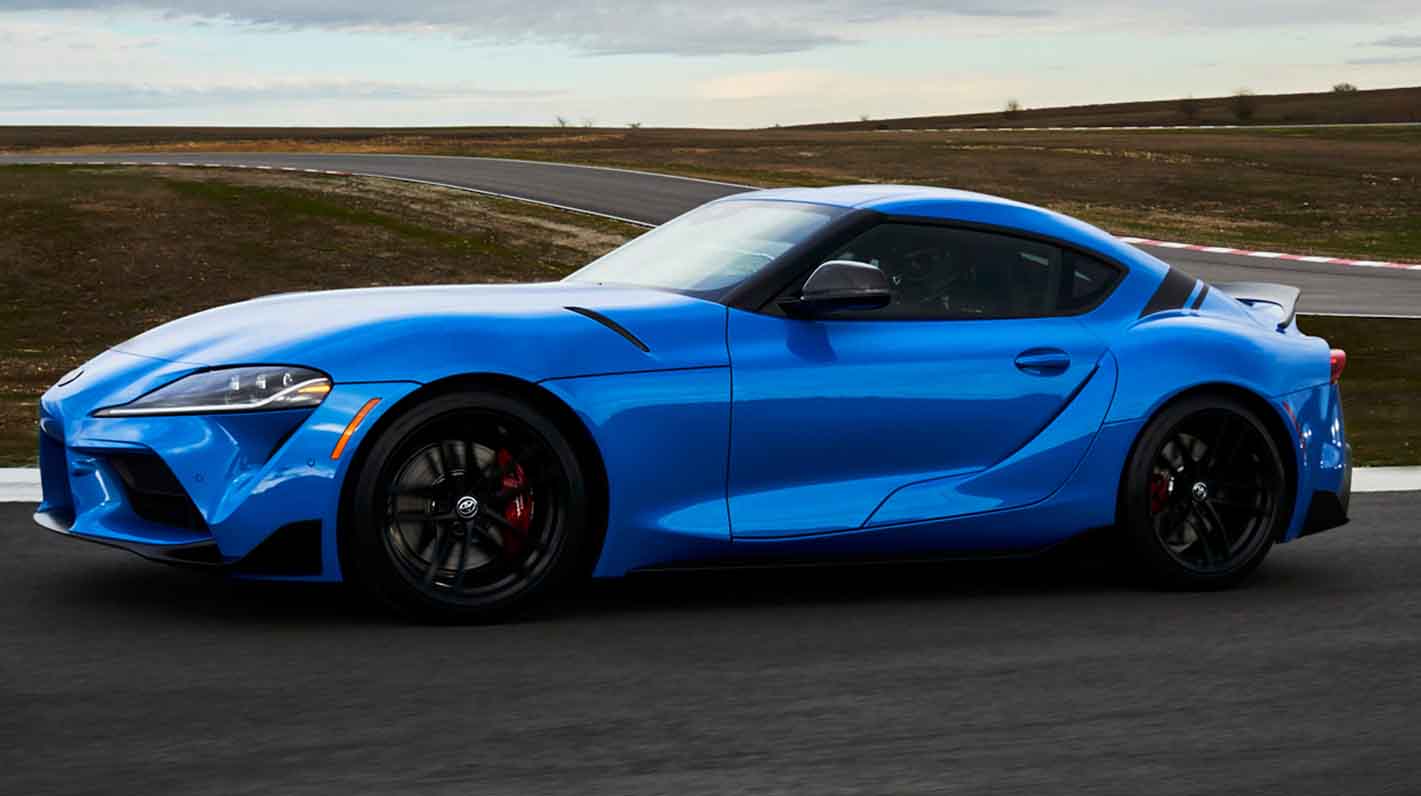
Toyota President and Master Driver Akio Toyoda tested the Supra on the Nürburgring and other racing venues to give his personal feedback to ensure this new model would exceed the expectations of Supra fans across the globe.
Supra devotees have waited a long time for the next-generation model, and they will find the 2020 Toyota Supra was well worth the wait.
The 2020 GR Supra Performance Story
The 2020 Supra will feature a 3.0-liter turbocharged inline six that will produce 335 hp and 365 lb-ft of torque. The torque comes on strong from very low engine speeds, thanks to a combination of a twin-scroll turbocharger, direct fuel injection and continuously variable timing on both the intake and exhaust camshafts. Engine response is further enhanced thanks to the inline six’s variable intake valve lift system that adjusts intake valve timing and duration.
The 8-speed automatic transmission delivers quick up- and downshifts and features paddle shifters for manual control when desired. Short ratios for the lower gears and a Launch Control function, which is not intended for use on public roads or for repeated short interval use, enable powerful acceleration with maximum traction. Toyota estimates 0-60 mph acceleration in 4.1 seconds, which makes it the quickest Toyota-branded production vehicle to date. Top track speed is electronically limited to 155 mph.
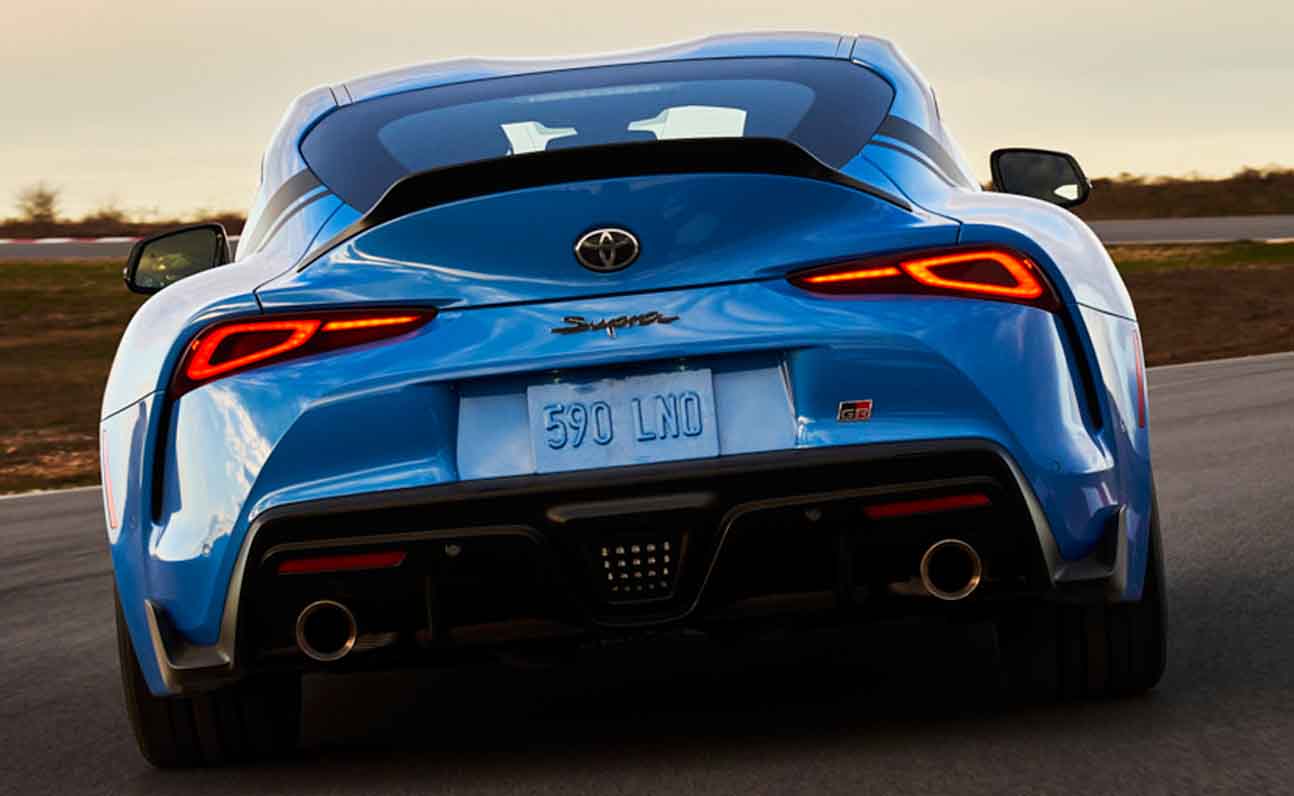
The 2020 Supra offers two driving modes, Normal and Sport. Sport Mode sharpens throttle response, increasing steering weight, improving transmission shift crispness, more aggressive active differential tuning and amplifying exhaust sound.
Traction Mode is part of the Vehicle Stability Control System and when selected provides track-driving capability by reducing intervention of the traction and stability control functions. Launch Control is available when the vehicle is in Sport and Traction mode.
For performance driving enthusiasts, the Toyota Supra will have an active differential that uses an electric motor and multiplate clutches to control lateral torque. The active differential precisely controls torque distribution between the rear wheels, with stepless variable locking from 0-100 percent. The differential can control torque distribution between the rear wheels when cornering under both acceleration and braking, enabling greater momentum through a corner.
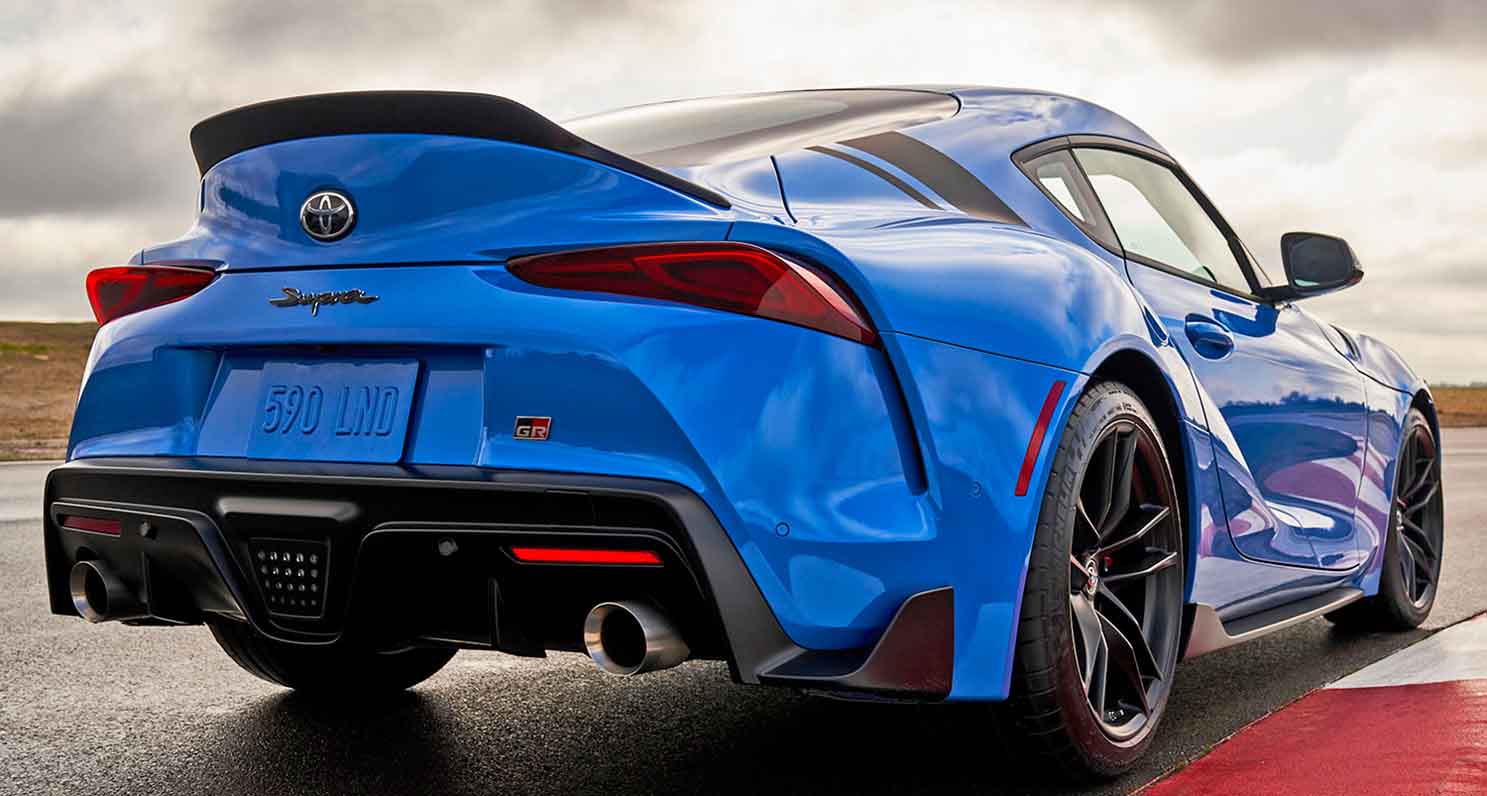
Shaped by Emotion… and Racing
The 2020 Supra embodies its rich lineage at first glance, with a design that shows a particular kinship with the fourth-generation Supra built from 1993-2002, as well as the landmark 1967 Toyota 2000 GT. The resemblance is more than skin deep: the new-generation Supra also shares with those notable models the common traits of a short wheelbase, sophisticated chassis, and high-performance inline-six-cylinder engine.
Toyota offered a glimpse of the new Supra’s design theme in 2014 with the dramatic FT-1 concept car that emerged from Toyota’s Calty design center in California. Toyota Supra’s striking exterior design was inspired by the FT-1’s expressive form.
Optimization of the FT-1 design onto the efficient, high-performance packaging of Supra was achieved by condensing the forms, reducing unnecessary elements and further enhancing the dynamic and powerful character. It focuses on core Supra attributes, such as its inline six-cylinder engine and rear drive layout, while enhancing other features, such as stretching the hood to highlight the engine, creating a taut, but spacious two-seat cabin that helps accentuate an ultra-wide stance. The result is a look unique to Supra internally referred to as “Condensed Extreme.”
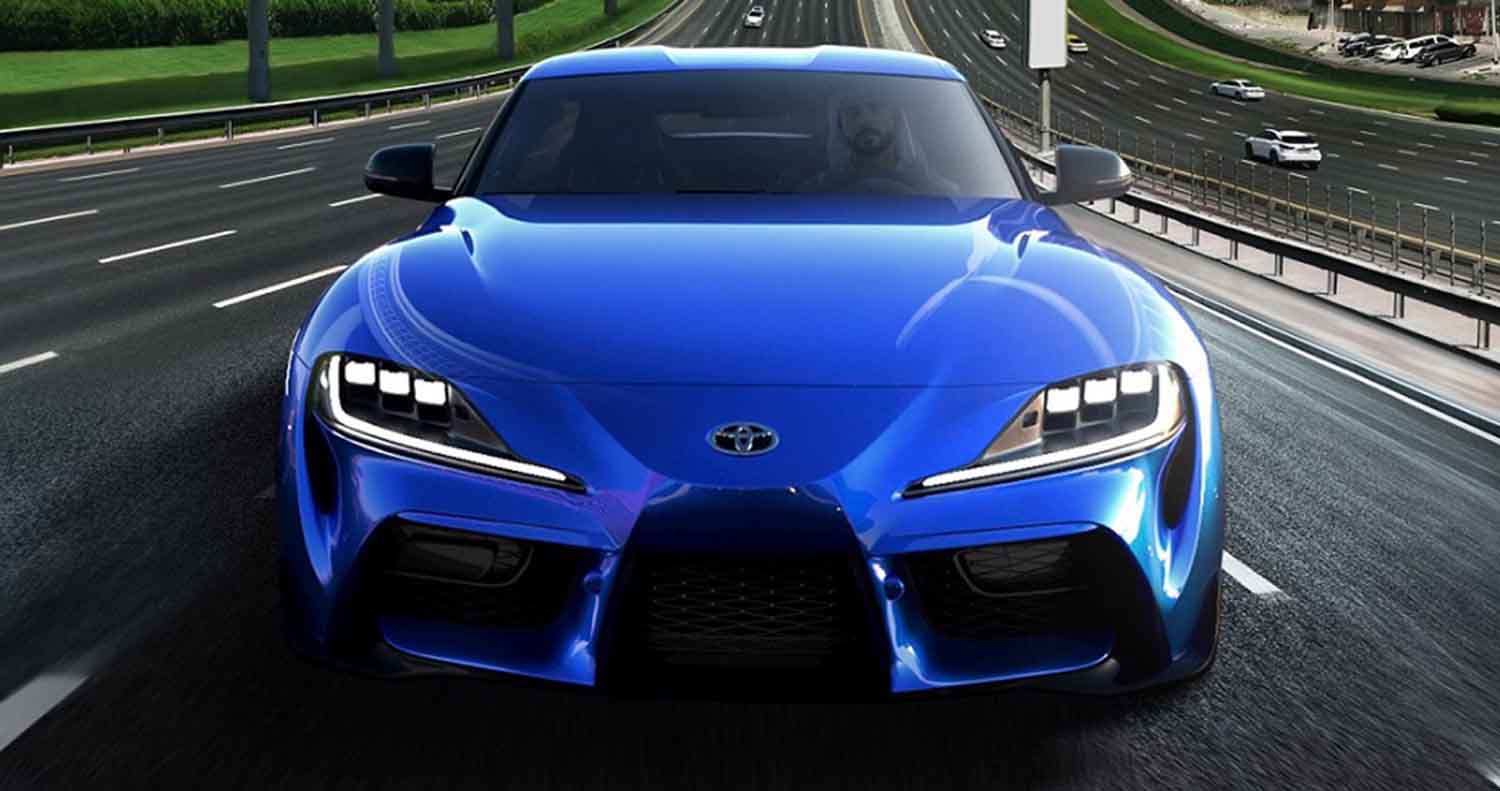
Functional by Design
The Toyota Supra design delivers a 50:50 weight balance while optimizing front-to-rear aerodynamic balance. Toyota sports car heritage is evident throughout. The double-bubble roof design, for example, recalls the Toyota 2000 GT and it reduces drag by shaving the roof center to reduce the projected frontal area without sacrificing occupant headroom.
The front fascia was inspired by the fourth-generation Supra, yet is even more expressive, with a prominent central grille section flanked by large air intakes. In the rear, the prominent, arching rear integrated spoiler, which helps to suppress aerodynamic lift, pays homage to the tall rear wing that was available on the fourth-gen Toyota Supra Turbo. The trapezoidal rear bumper shape conveys a dynamic sense of movement toward the tires.
The six-lens LED headlights integrate both daytime running lamps and turn signal functions to create a distinctive lighting signature for the new Supra. The rear combination lamps feature a purposeful structure with the turn, tail, and stop functions integrated into the distinctive main ring shape. The backup lamps feature white LEDs located in the center of the lower bumper.
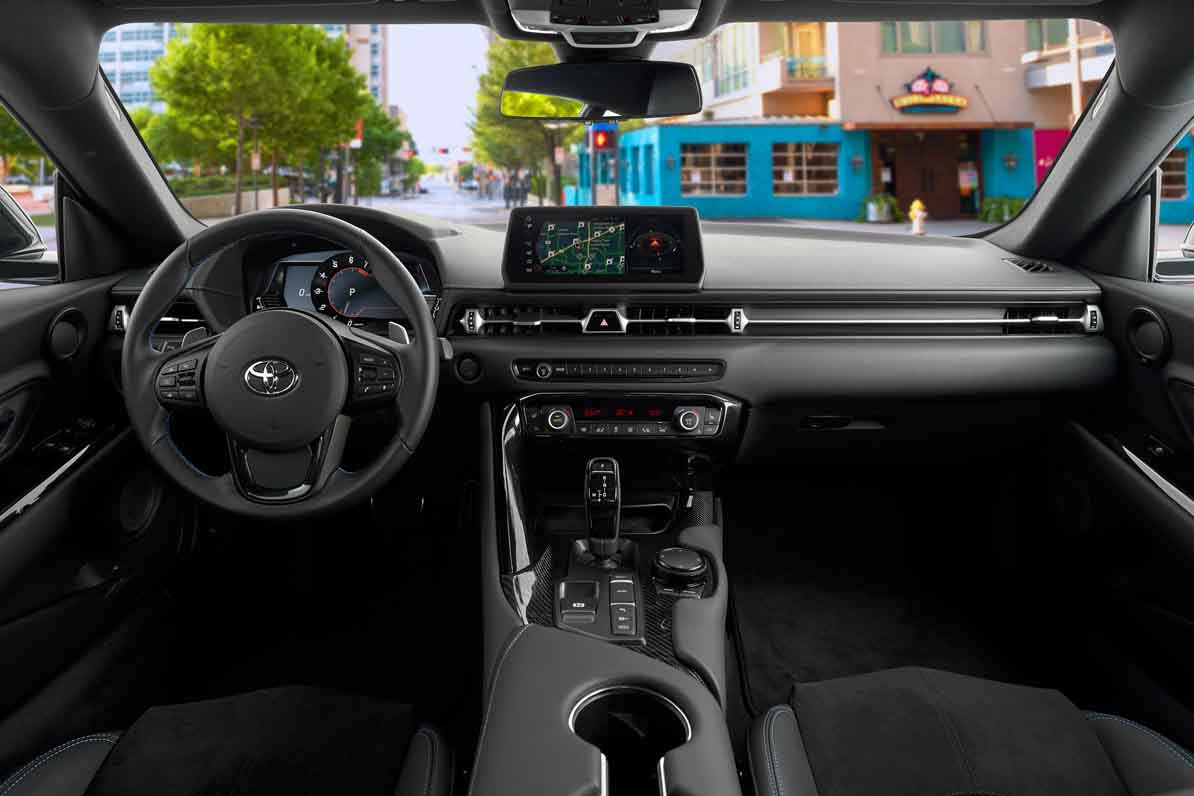
The Differences Lie Within
The two grades available on the 2020 Supra – 3.0 and 3.0 Premium – feature the same powertrain, with the differences highlighted on the interior.
The 3.0 grade has a 6.5-inch display with Bluetooth and iPod capability, as well as Alcantara seats. Navigation and JBL Audio will be an available option.
The 3.0 Premium grade features an upgraded 8.8-inch wide-format touchscreen display with Navigation, Supra Connect telematics services, supports wireless Apple CarPlay, a premium 12-speaker JBL audio system, wireless phone charging and a color Head-Up Display. The 3.0 Premium grade will also feature heated, leather-trimmed seats.
The Supra Launch Edition is based on the 3.0 Premium grade.
Both grades are equipped with a deft balance of function and premium comfort and convenience features. Keyless Smart Entry, dual automatic climate control, auto-dimming rearview mirrors, rear camera, rain sensing windshield wipers, garage door opener, power folding mirrors, and a leather-wrapped steering wheel are standard.
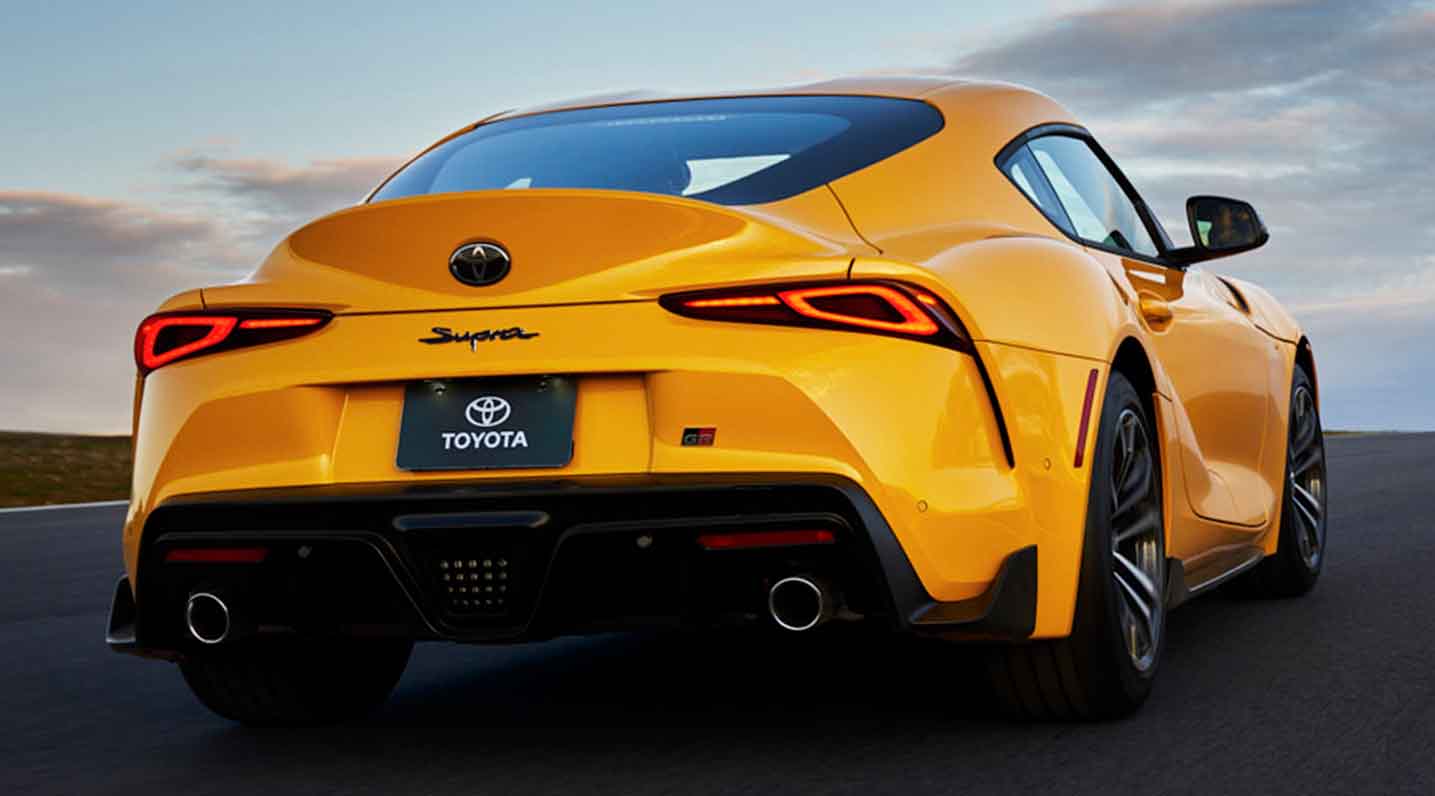
Standard safety features on both grades, as well as the Launch Edition, include forward collision warning, automatic emergency braking with pedestrian detection, lane departure warning with steering assist and automatic high beams.
The Driver Assist Package brings additional features that will be optional on both grades. It includes full-speed adaptive cruise control, blind spot monitor, rear cross traffic alert and parking sonar.
Details Matter
Expressive colors accentuate the emotional connection drivers feel with a high-performance sports car, which is why the 2020 Toyota Supra’s paint palette will include bold Renaissance Red 2.0, Nitro Yellow and Downshift Blue. The available Phantom Matte Gray adds a sense of drama to the Supra’s tautly curved surfaces by combining a matte finish and a hint of blue.
Other available colors include Absolute Zero White, Tungsten Silver, Turbulence Gray and Nocturnal Black.
Fun fact: In the new version of the famous Supra logotype, the “S” was inspired by the Nürburgring “S” curve.
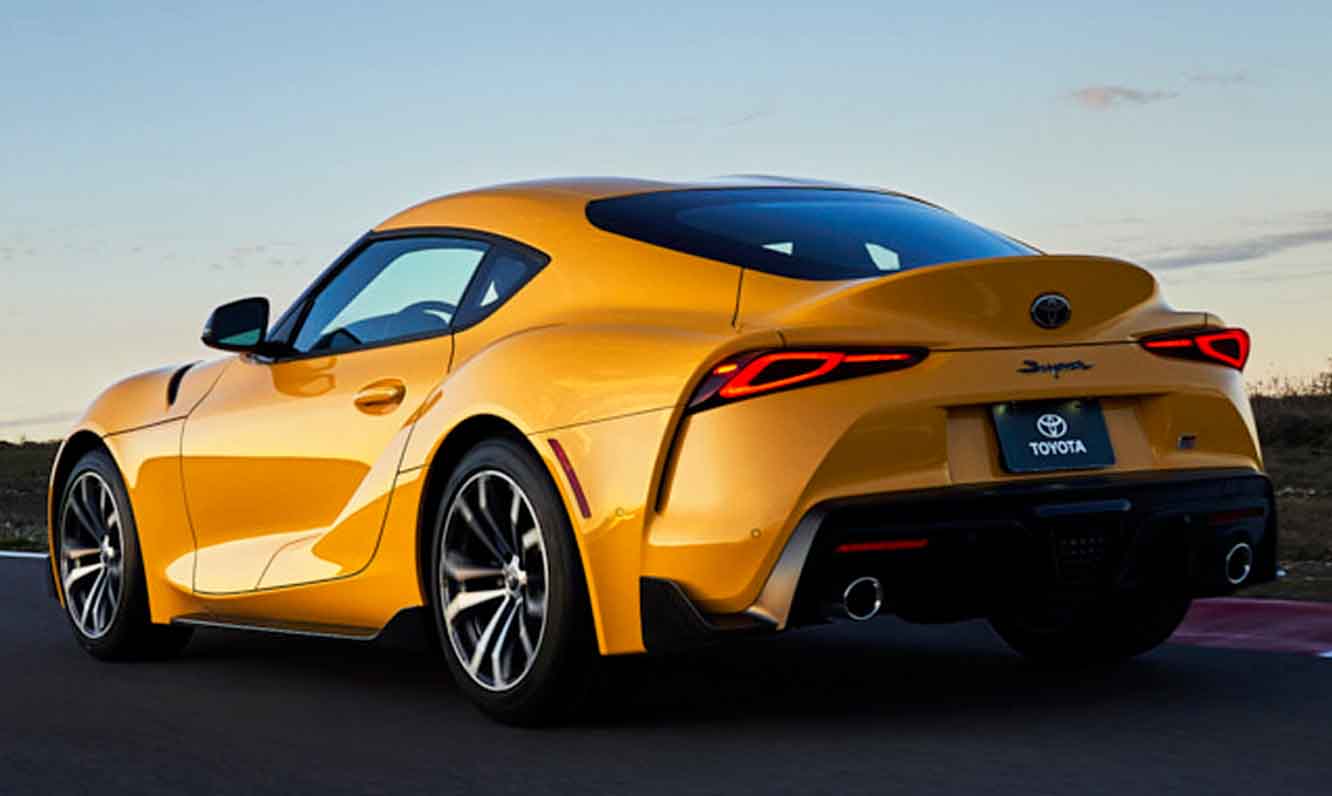
Ready for Launch
The initial 1,500 production Supras for the U.S. will be Launch Edition models. Each will be uniquely numbered and have distinctive features signifying the exclusivity and excitement of Supra’s return.
The Supra Launch Edition is available in exterior colors of Absolute Zero White, Nocturnal Black or Renaissance Red 2.0, each featuring high-contrast red mirror caps and 19-inch forged matte black alloy wheels.
The Absolute Zero White and Nocturnal Black Supra Launch Editions have a red interior. Each of the racing-inspired seats have red leather trim, with red leather-wrapped steering wheel grips, and a red center console with carbon-fiber accents.
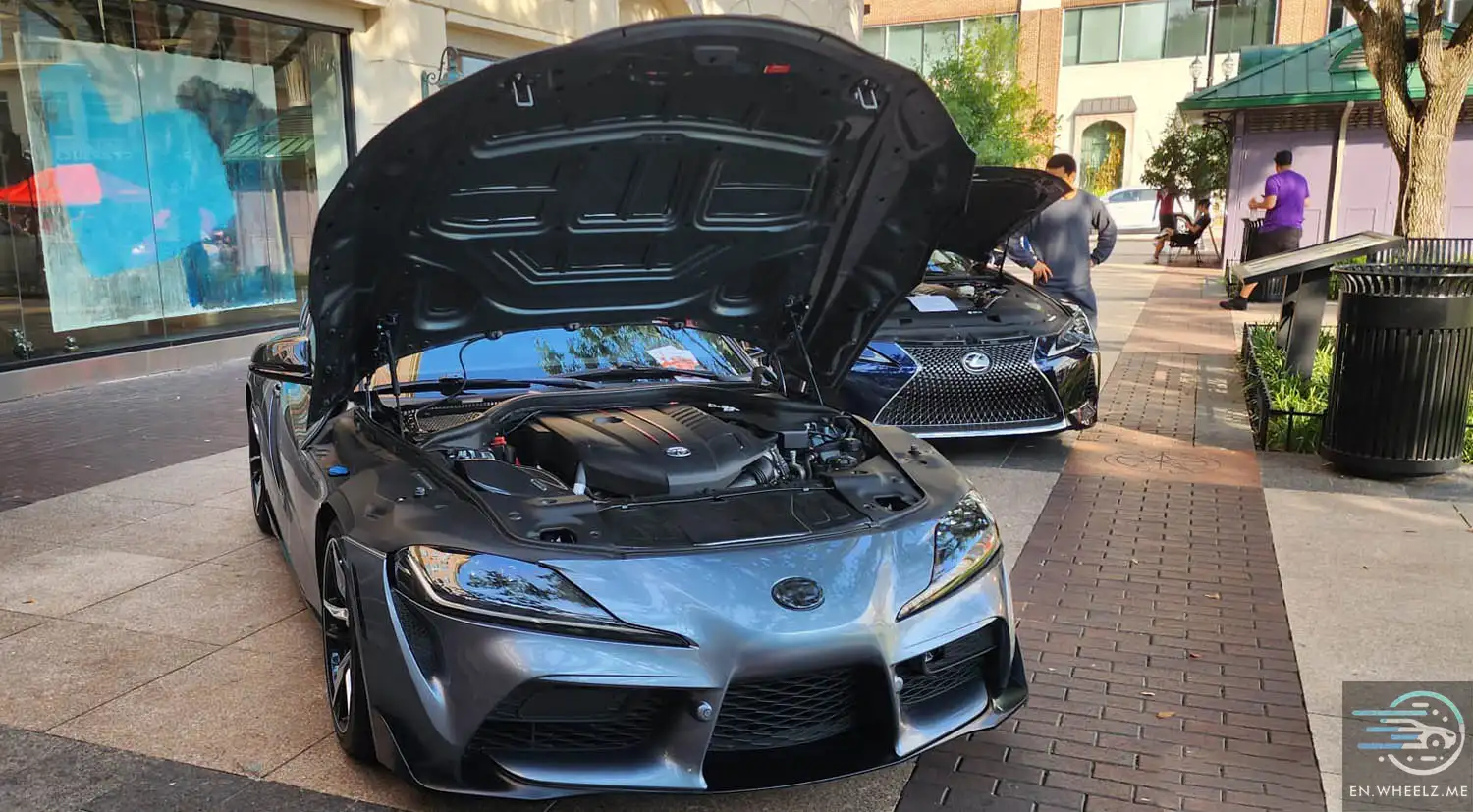
The Renaissance Red 2.0 Supra Launch Edition features a black leather-trimmed interior, with black seats, a black steering wheel and black center console. The black interior also has carbon-fiber accents.
The first 1,500 Supras feature an individually numbered carbon-fiber badge on the passenger-side dashboard complete with a graphic of Toyota Motor Corporation President and Master Driver Akio Toyoda’s signature.
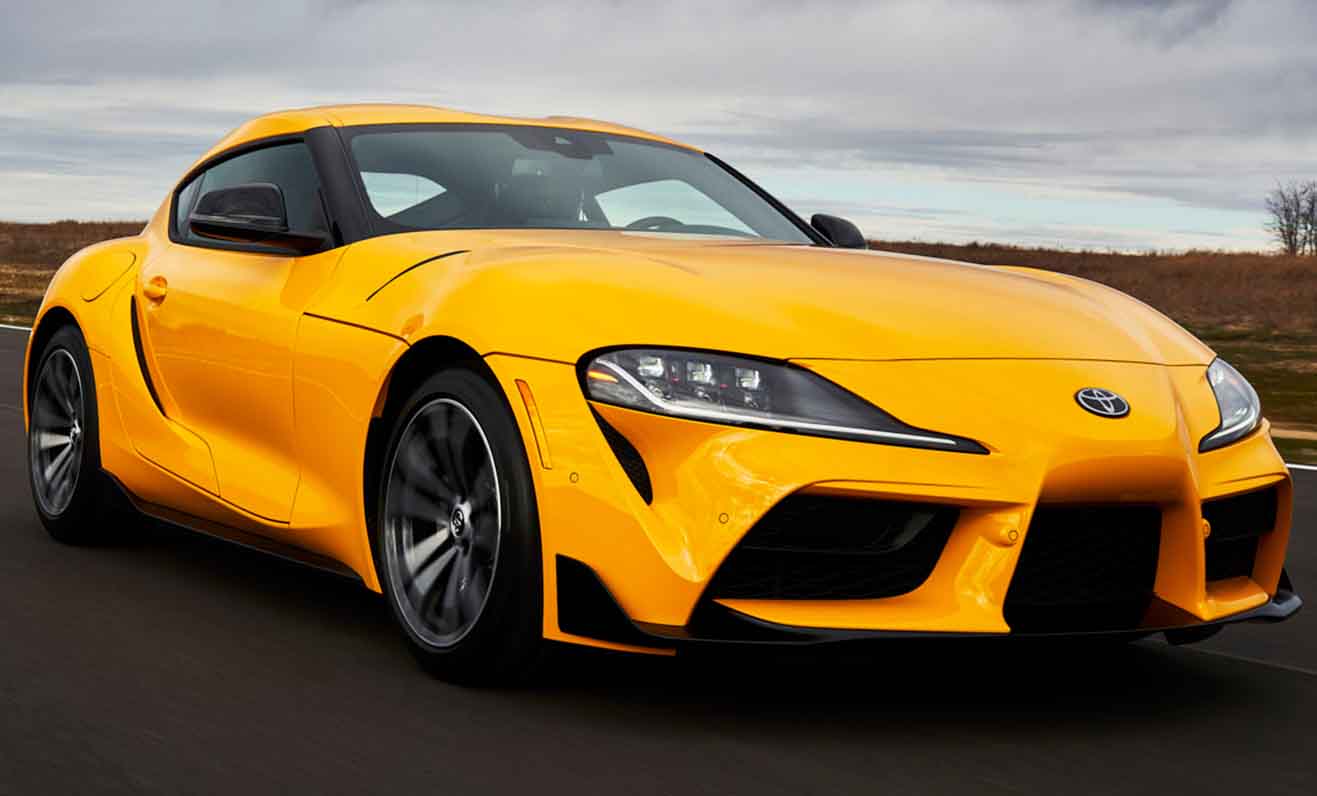
Cockpit Concept: Wrapping the Driver
The 2020 Toyota Supra cockpit deftly blends traditional GT elements with ultra-modern functionality. The low, narrow-section dash gives the driver expansive forward visibility, ideal for precisely placing the car in corners.
A high-definition color display forms the instrument panel, projecting a large-diameter, three-dimensional meter dial that seems to float over it. The single-meter design consolidates information necessary for performance driving, such as the tachometer and shift-timing indicator, enabling the driver to easily focus on critical control information through the small-diameter steering wheel.
The display’s easy-to-read layout puts multimedia information, including audio and available navigation, on the right side. An available full-color Head-Up Display projects vital driving and navigation information ahead of the driver.
Toyota designers took a fresh approach to designing the center console, giving it an asymmetrical shape that tightly envelops the driver, with a padded pillar that serves as a right leg bolster. The passenger’s side of the console, meanwhile, is open for a roomy feel, yet also features kneepads for bolstering in corners.
The center console tightly groups controls for sports driving. The climate control panel protrudes from the center dash, easing operation and helping to keep the eyes on the road.
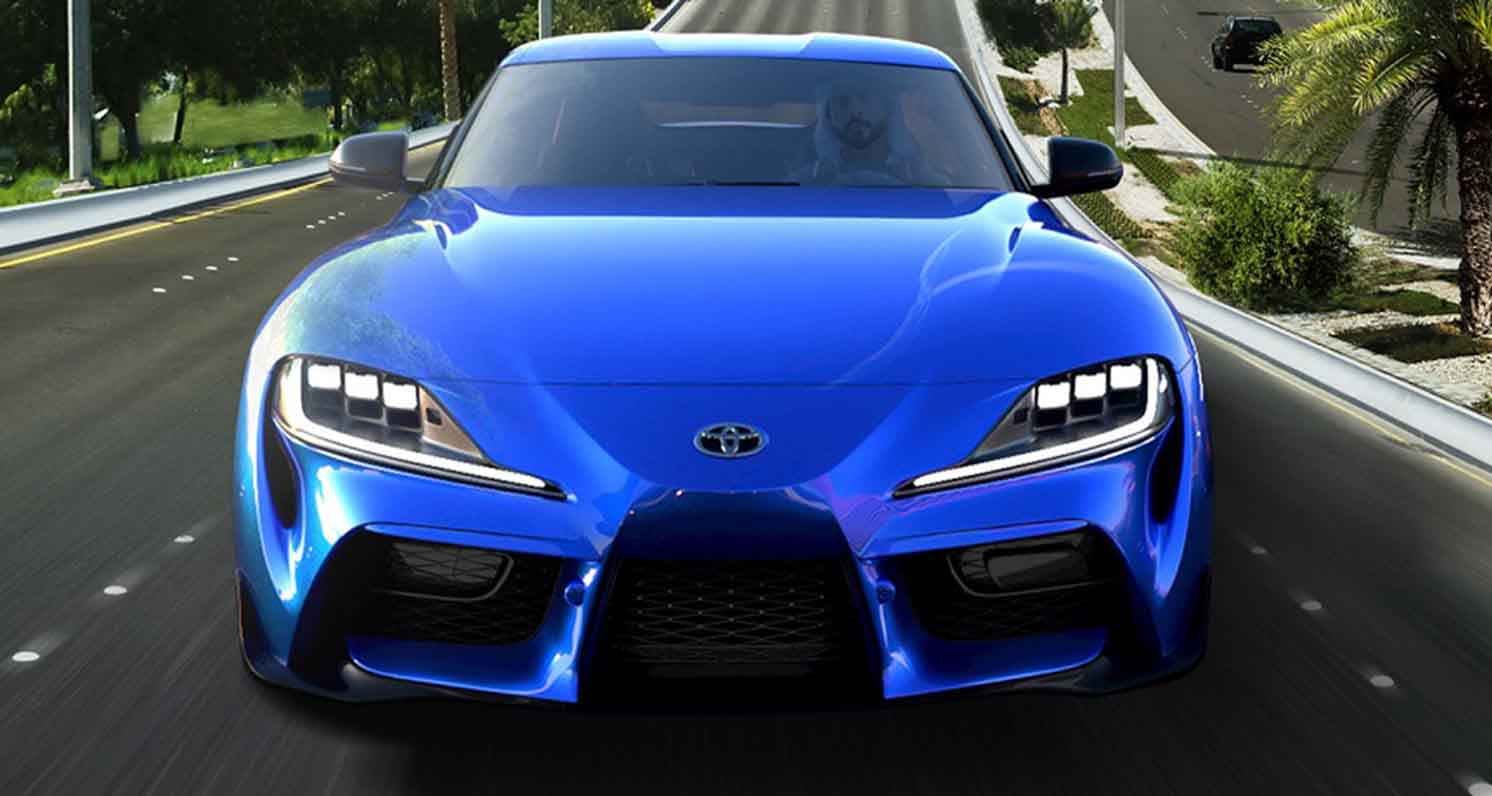
Chassis: Lessons from the Track
Toyota GAZOO Racing had a specific vision when developing Supra. High structural rigidity, a low center of gravity and 50:50 weight distribution were paramount to Toyota’s goal of achieving neutral cornering balance. For example, during testing Toyota identified nine areas of the vehicle’s rear structure to be reinforced to increase rigidity.
Toyota also specified spring and shock absorber tuning for the new double-joint spring strut front suspension and multi-link rear suspension. Likewise, Toyota set specific parameters for the Supra’s stability control system performance.
The front suspension subframe and control arm mounting points are extremely rigid to yield precise cornering characteristics. Aluminum control arms reduce unsprung weight, resulting in superior agility and efficiency. High-performance wheel hubs feature increased stiffness and optimized kinematics. For precise handling, Supra features a variable assist and variable ratio sport-tuned electric power steering.
The multi-link rear suspension with a five-arm construction consists of lightweight aluminum to reduce weight while steel is employed in key areas for added strength and durability. The rigid rear subframe and bracing that connects it to the body structure help ensure extremely precise wheel control. Supra will come standard with 19-inch forged alloy wheels. The rear wheels and tires are wider than on the front (rear tires: 275/35R19; front tires: 255/35R19) to enhance grip, and performance Michelin Pilot Super Sport tires are fitted. Brakes are large at all four corners, highlighted by 13.7-in. front rotors held by 4-piston Brembo calipers.
Standard on all Supras is Adaptive Variable Suspension which instantly adjusts damping force in response to driver input and road conditions. Two settings for the suspension are available – Normal and Sport.
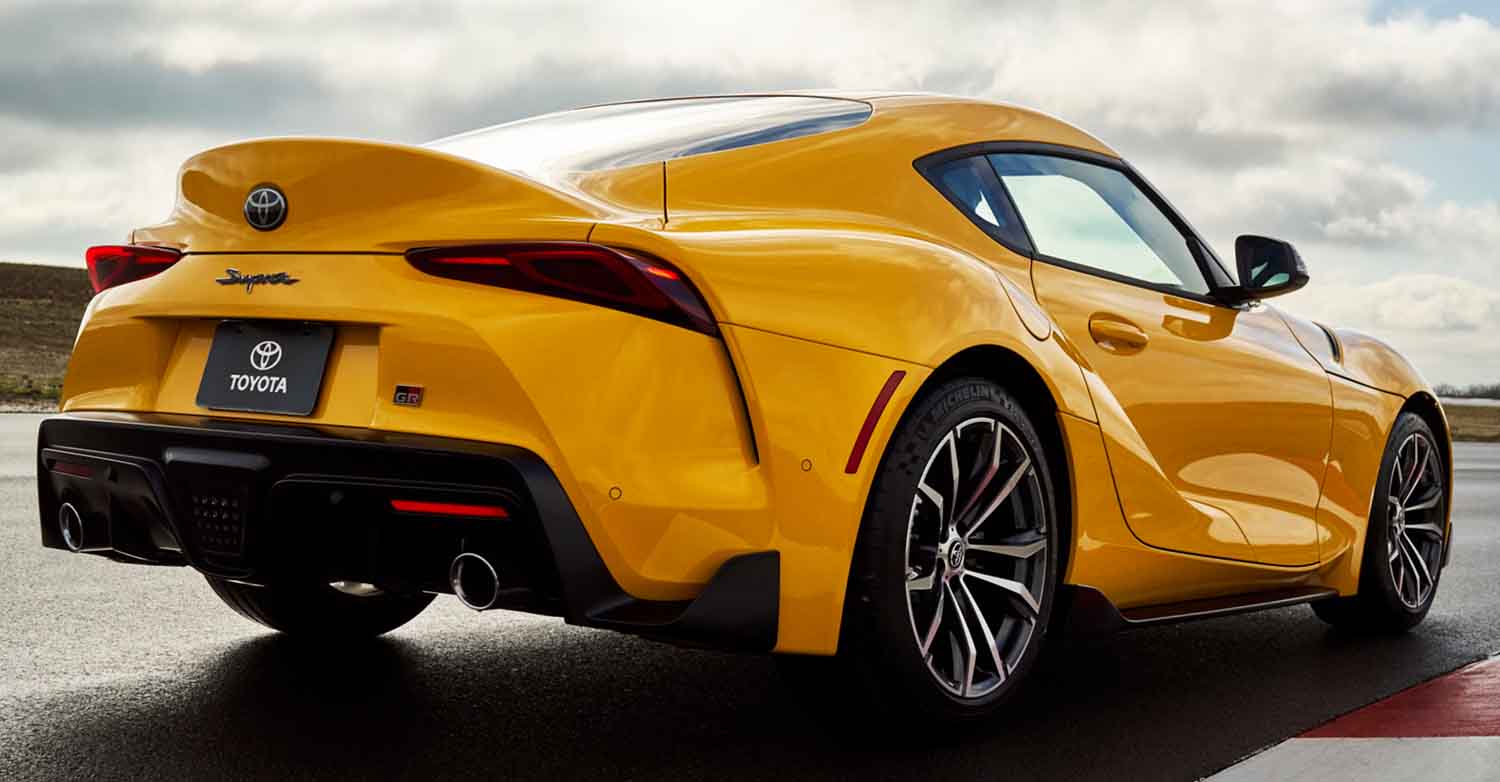
Road and track development took place in France, Austria, Italy (including many winding roads through the Alps), Germany (including the Nürburgring track), Sweden (ice and snow road testing), the U.K., Japan, Australia, and the U.S. A global citizen, the new Toyota Supra will be assembled at Magna Steyr in Graz, Austria.
Thrilling by Design: The 2020 GR Supra Inherits Great Design Genes
It had to be a “Wow!” car. If Toyota was going to build another Supra, the designers had to go all-in. That was the clear call of action from the CEO, Akio Toyoda: generate more emotional designs and a feeling of heart-pumping excitement.
This was not a marketing message but rather a design and development directive. When it came to the Toyota Supra specifically, there was also the matter of the fourth-generation model having become enshrined as a car-culture and pop-culture icon. So, no pressure.
Nearly 15 years had passed since the fourth-generation Supra left the U.S. market when, in 2012, Toyota began planning for a fifth-generation model. The 2020 GR Supra, while influenced by that pivotal model, emerged as its own expression of the brand’s performance, design and racing heritage.
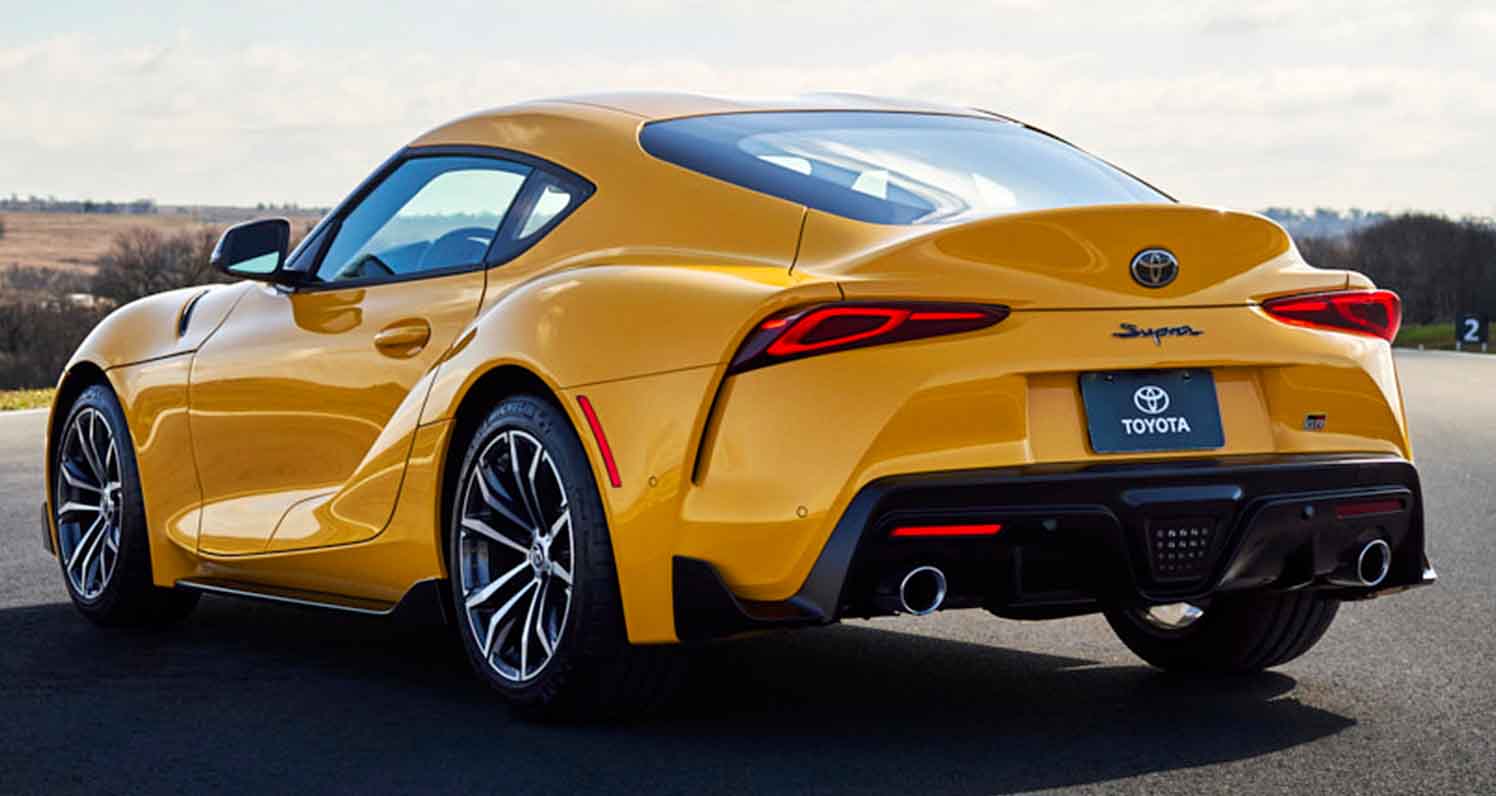
When the camouflaged pre-production prototype of the GR Supra negotiated the famous hill climb at England’s Goodwood Festival of Speed in fall 2018, the spectators’ reaction affirmed that “Wow!” had indeed been achieved. The path to getting there was somewhat circuitous.
FT-1: Fun and Games
While it became an open secret that Toyota was developing a new Supra, one thing seemed to be missing from the process: a concept car. The first auto show car to be called Supra did not appear until spring 2018, when Toyota exhibited the GR Supra Racing Concept at the Geneva Auto Show.
In retrospect, the astonishing FT-1 Concept that Toyota first showed in 2014 had fueled speculation that it was a Supra concept, and indeed, the FT-1 would become the stimulus for the GR Supra’s design. But it didn’t start out that way.
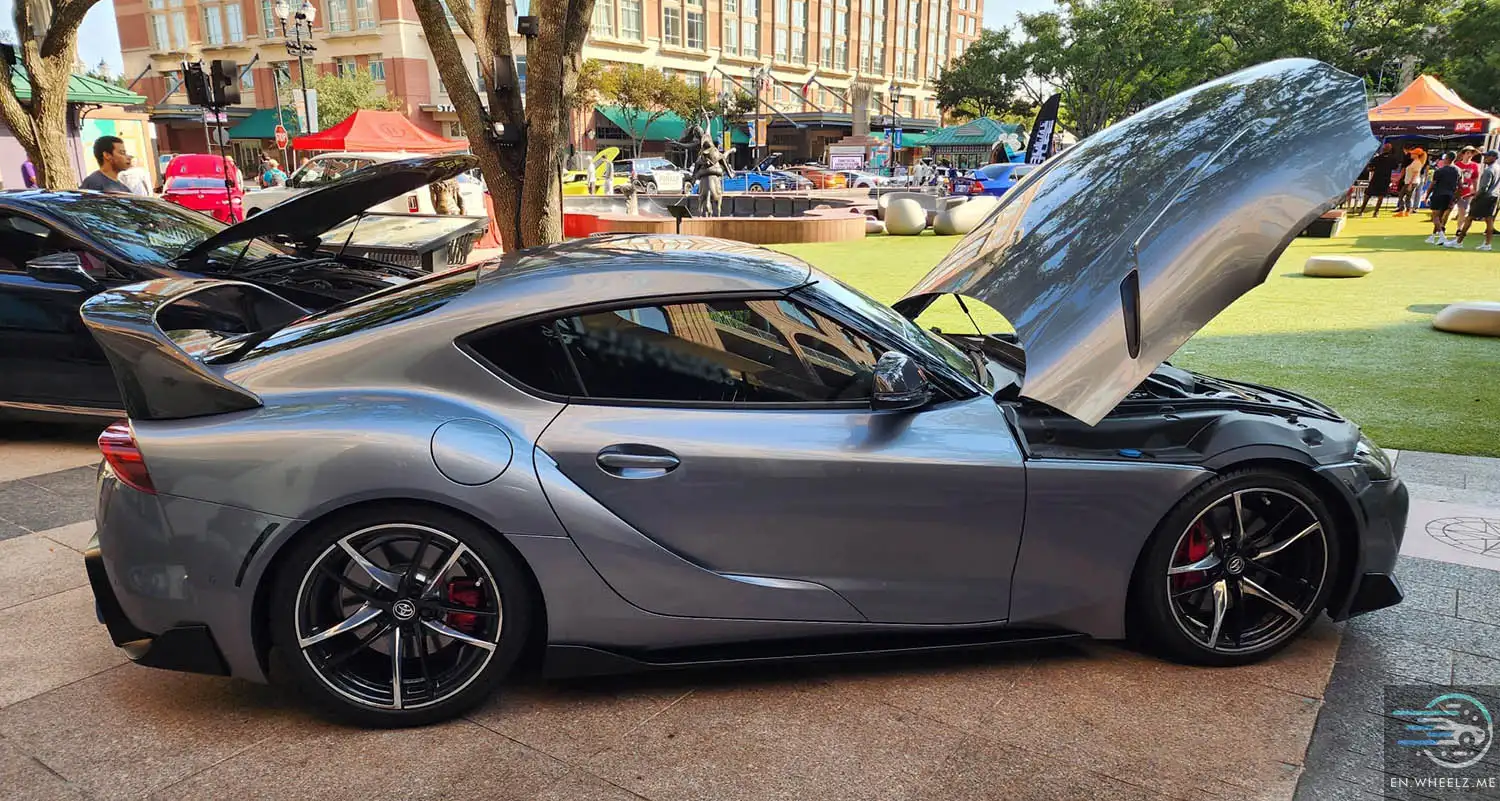
The FT-1 (meaning “Future Toyota-Ultimate”) was a concept car in the truest sense, not created as a prototype for a particular car. In response to Mr. Toyoda’s call for more emotional designs, the FT-1 sprang from Toyota’s Calty Design Research in Newport Beach, Calif. Calty worked with Polyphony Digital, creators of the popular Gran Turismo driving simulator, to add a virtual FT-1 to the game.
Meanwhile, plans made with BMW in 2012 to jointly develop a shared sports car platform were getting underway. The FT-1 was not, however, designed around any parameters established for the new model. On the contrary, it was larger, and more of a road-going Le Mans prototype racecar than a production sports car.
Nevertheless, the FT-1 was a raw expression of Toyota sports car heritage, drawing inspiration from both the fourth-gen Supra and Toyota’s stunning 1967-1970 2000 GT. When Mr. Toyoda saw and “drove” the FT-1 in the Gran Turismo simulator, he called for building it as a concept car.
There was no explicit goal for the FT-1 other than to make a statement for Toyota design and to gauge public reaction. An overwhelmingly positive global response, coupled with knowledge of Toyota’s agreement with BMW, sparked widespread speculation that the FT-1 was a Supra concept. It became abundantly clear within Toyota that it should be the basis for the Supra’s design. Making that happen was not a job for the timid.
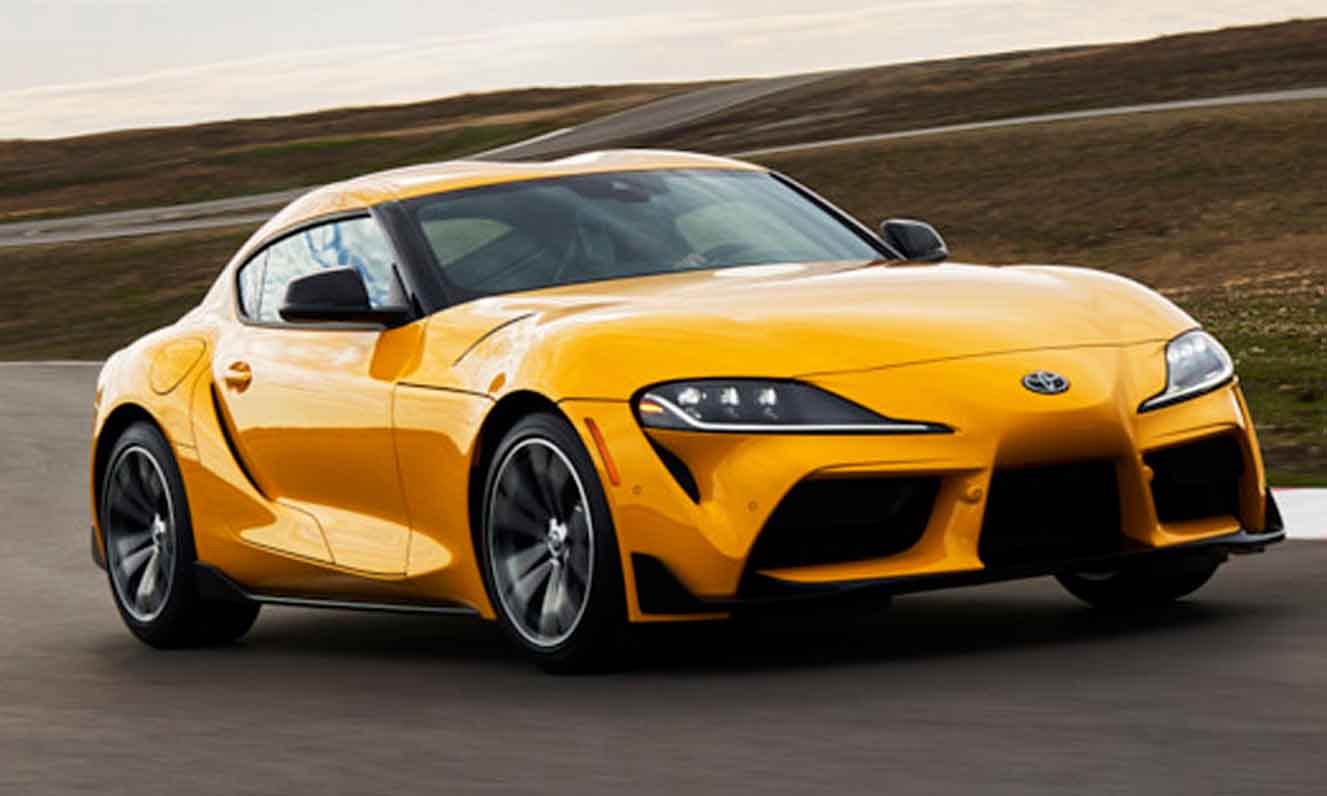
Not Lost in Translation
Designed without constraints imposed by engineering and manufacturing boundaries, true concept cars rarely transition to production without a significant “toning down.” There were a few elements of the FT-1 that were simply impractical for a production car, such as its exaggerated width. Yet, that was the look Toyota wanted for the new Supra.
The challenge of translating the FT-1 as closely as possible for the production platform went to Project Chief Designer Nobuo Nakamura. His mission was to capture the concept’s unconstrained persona within the constraints of the new Supra’s packaging.
Certain FT-1 elements were essential, including the nose that combined influences from the fourth-gen Supra (fenders and upper fascia) with a Formula One racecar (lower fascia with prominent central grille section flanked by large air intakes). The FT-1’s shell-like front fenders and dramatic upswept rocker panels that flowed into wide rear quarters were re-interpreted for the GR Supra – no easy feat on the smaller package.
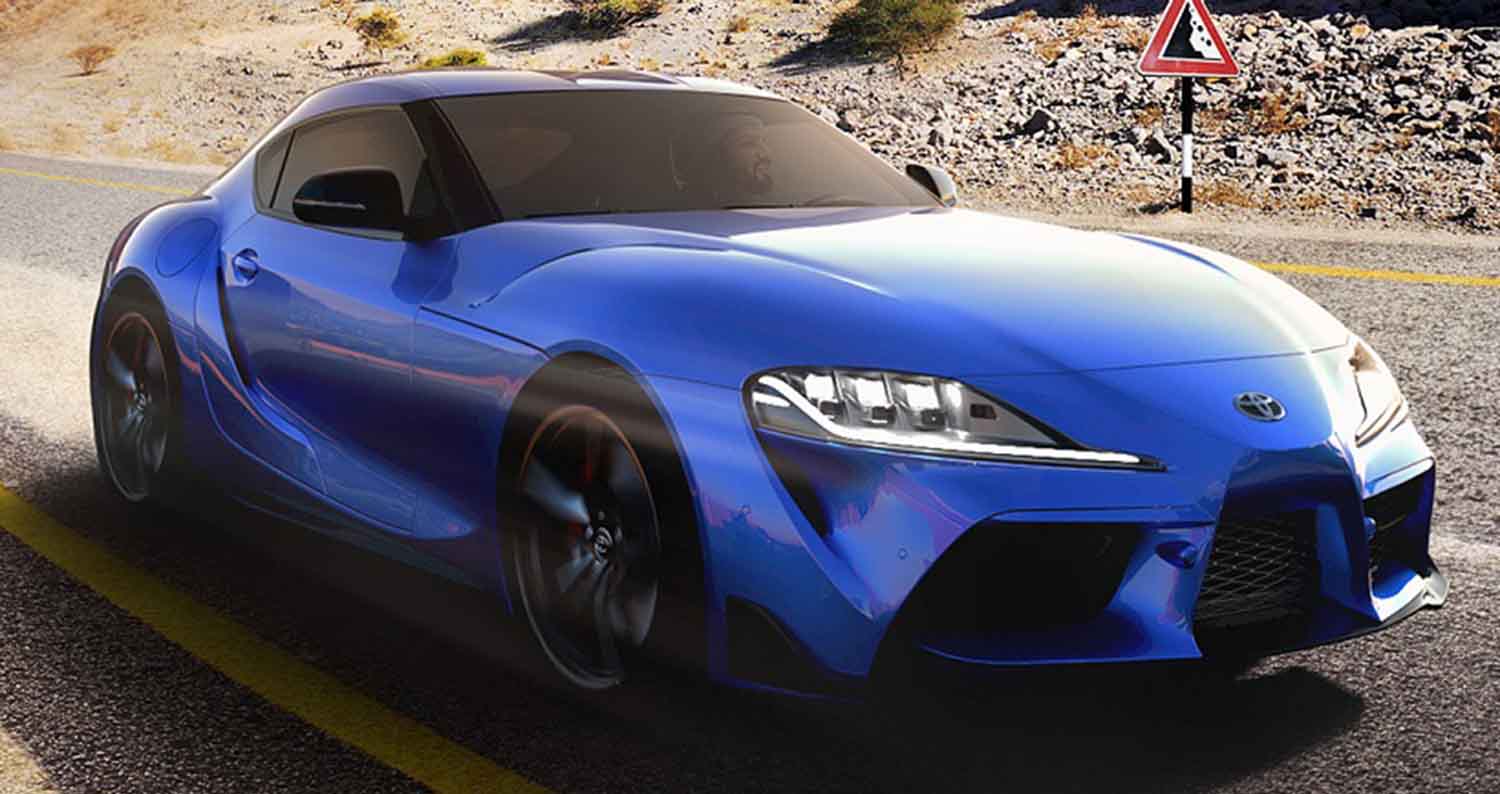
Also paramount for the Supra design was pushing the cockpit far rearward within the wheelbase. This form not only helps achieve near 50:50 weight distribution for optimal handling performance, but also emphasizes the classic proportions associated with a rear-drive, inline-six-cylinder engine sports car.
As on the FT-1, the integrated rear spoiler, a functional part of the aerodynamic design, is an homage to the tall, hoop-like rear wing that was optional for the fourth-gen Supra Turbo. The FT-1’s reverse-wedge cabin and “double bubble” roof inherited from the 2000 GT, would also carry forward to the Supra.
Combined, the elements suggest the look of a wraparound windshield or racing helmet visor. The FT-1’s unique exterior lighting designs, too, were refined for production using LED technology.
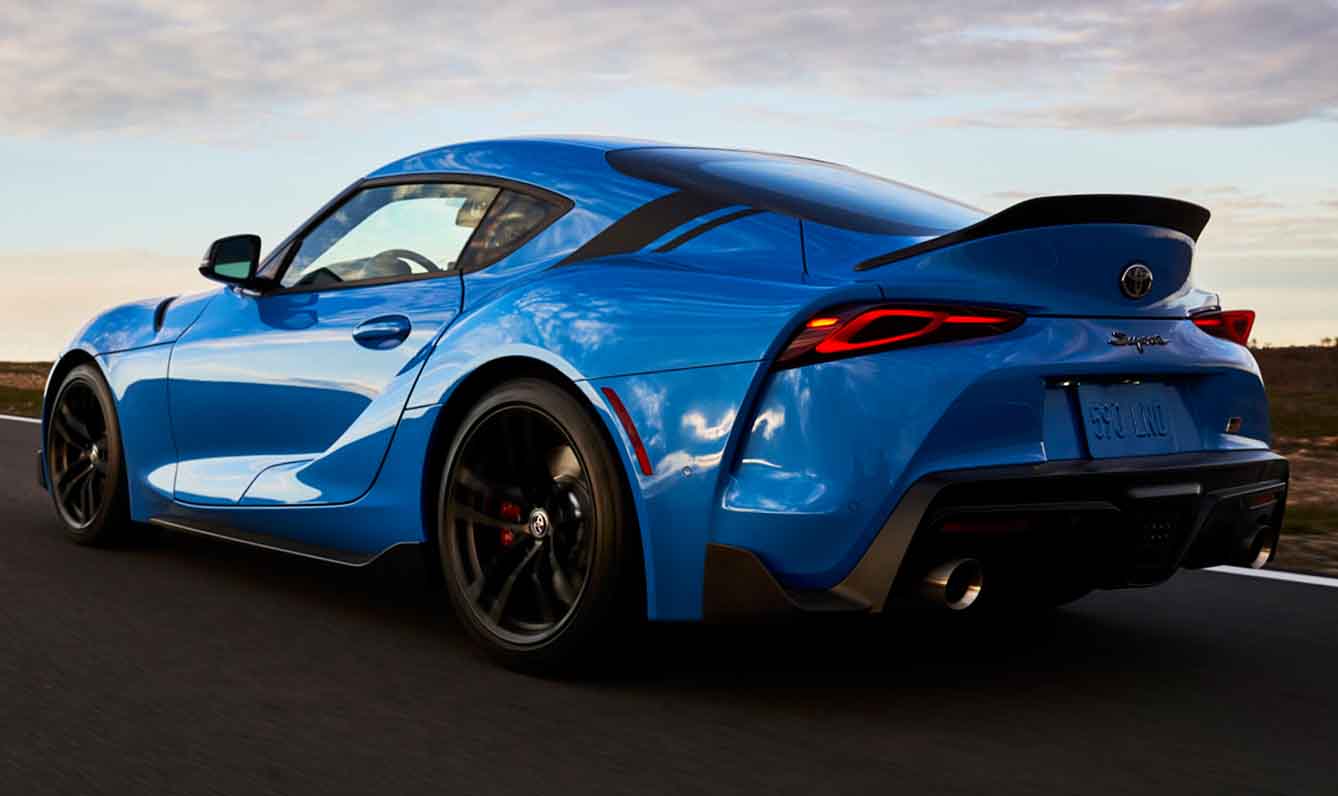
“Condensed Extreme”
Nakamura distilled the Supra’s guiding design theme to a concept he called “Condensed Extreme,” an allusion to the car’s packaging. “Condensed” refers to the relationship between the large tire diameter and relatively short wheelbase and overall length. “Extreme” describes the relationship between the short cabin (position of the occupants) and the wide tread (position of the tires).
“This ‘Condensed Extreme’ concept is the only thing I mentioned to the design team, as I didn’t want to restrict their imagination,” Nakamura says. “I deliberately avoided using emotional words, and had the designers express their individual passion through the design.”
The result, he explains, maximizes the extreme feel of the basic packaging and eliminates any unnecessary elements to achieve a condensed feel, accentuating both aspects. For a point of reference, the two-seat 2020 GR Supra is 172.5 inches long on a 97.2-inch wheelbase — 5.2 and 3.2 inches shorter, respectively, than those dimensions for the fourth-generation Supra, which was a 2+2.
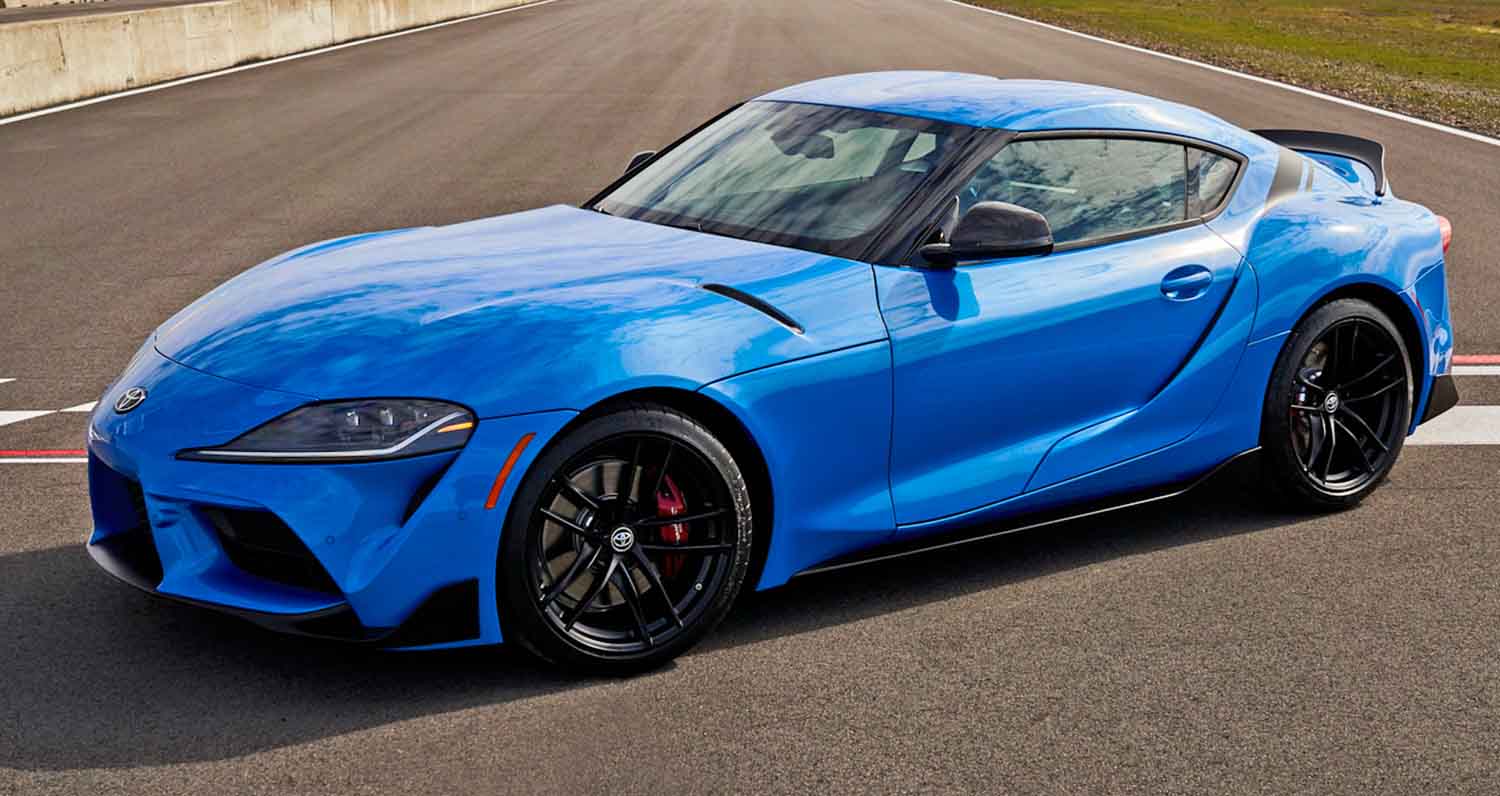
Nakamura might not have used emotional terms to inspire his design team, but he had emotions in mind for the result he wanted to achieve.
“I also wanted to express the romance of a sports car,” he says. “It is a romance that has the power to make someone want to touch the car when they see it.”
In particular, Nakamura felt the FT-1’s upswept rocker panels and wide rear fenders were indispensable to the GR Supra’s design.
“The rear fender shape is especially characteristic of this car,” he says. “It wasn’t easy, even with the experience and skills of the chief clay modeler. The result was a shape close to the engineering limits of manufacturing, however the car could be produced without any changes, thanks to the help of the engineers who fell in love with its shape.”
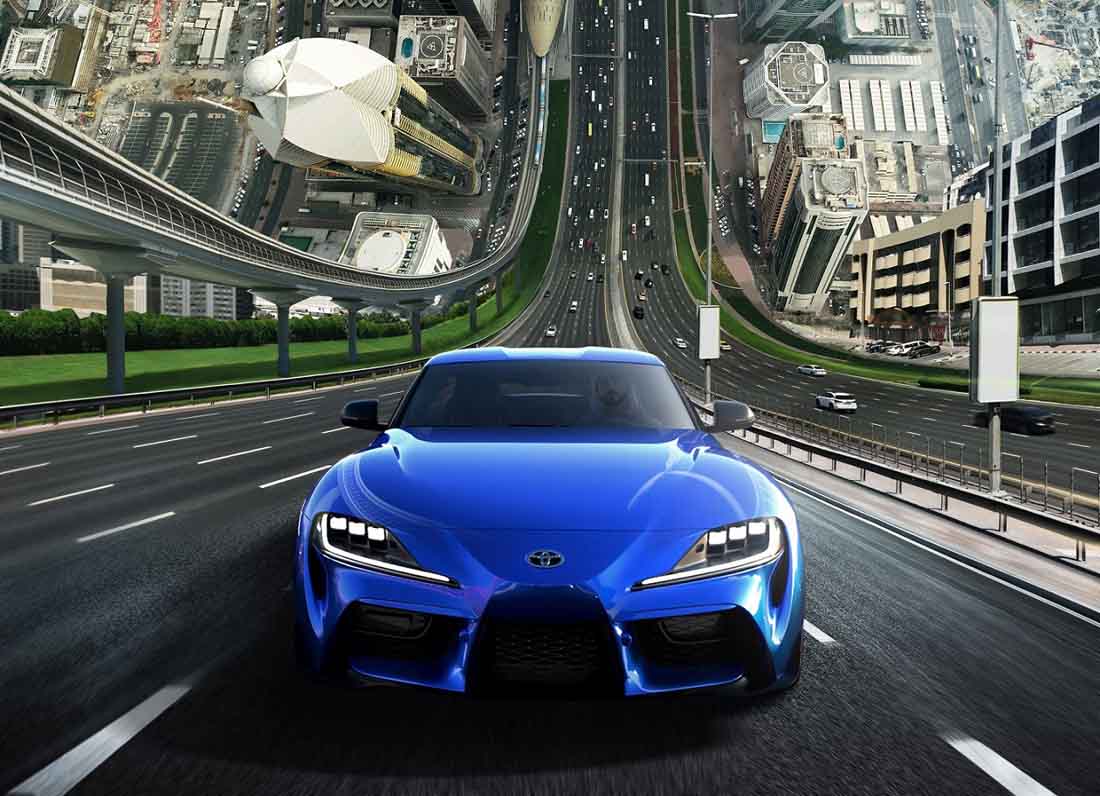
The classic 2000 GT’s design exerted a strong influence with its long nose, short cabin profile, without making the GR Supra “retro.” The details are like a map pointing to that car, but in a modern way:
- Horizontal hood flowing dynamically rearward from the low nose position
- Low belt line, with the tip of the rear spoiler almost level with the rear edge of the hood
- Slightly forward-slanting underbody
- Strongly rearward-slanting cabin silhouette
- Minimized cabin volume while retaining space for occupants
- Blacked out front pillars
- Character lines on the roof sides
The Supra’s wind-friendly shape is a key to both its high-speed stability and its exemplary fuel efficiency (32 mpg highway is projected). The “double-bubble” roof design reduces drag by shaving the roof center to reduce the frontal area without sacrificing occupant headroom.
While the drag coefficient is often spotlighted when it comes to discussing aerodynamics, Toyota also paid much attention to the lift coefficient value. To that end, the entire underfloor area is covered to reduce air resistance, and the covers and seamless fender liner shape are shaped to suppress lift, enhancing the car’s handling and stability. The tail shape echoes the fourth-gen model and the FT-1, with the “hump” across the trunk lid an integrated rear spoiler that helps to suppress lift.
The trapezoidal rear bumper shape conveys a dynamic sense of movement toward the tires. The fourth-gen Supra made a statement with its taillights, each side’s pod containing four distinct softball-sized round lamps. The 2020 GR Supra also makes a distinct lighting statement, but with its rear combination lamps in a striking blade-like shape and a simple arrangement of turn, tail, and stop functions. Inspired by the rear indicator LEDs on a Formula One racecar, the GR Supra’s backup lamps are a series of 20 LEDs located in the center of the lower bumper.
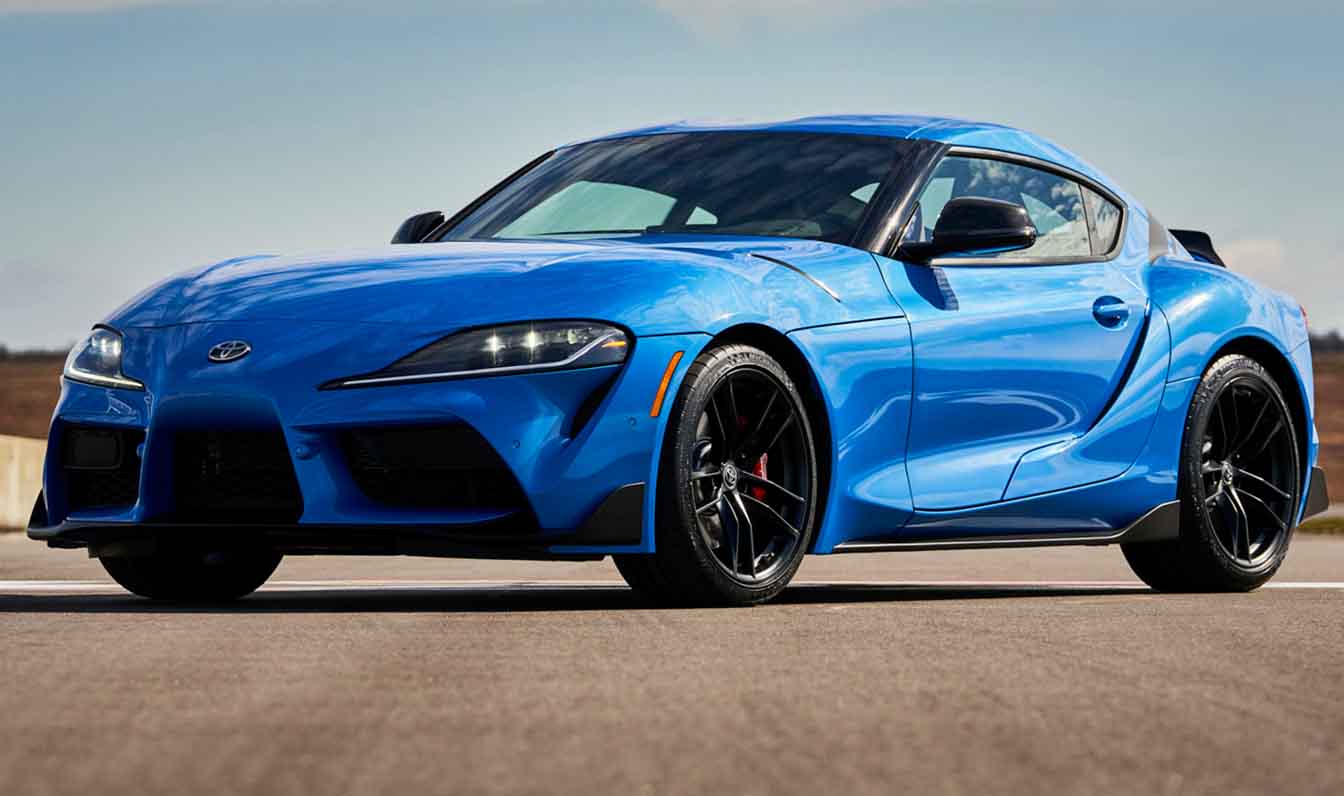
The Colors of Excitement
Like the car itself, the 2020 GR Supra’s paint palette is not for the cautious. Daring hues like Renaissance Red 2.0, Nitro Yellow and Downshift Blue en the emotional connection drivers feel with the car while drawing admiring eyes.
The available Phantom Matte Gray adds a sense of drama with a blue to create a metal-like texture. Tungsten Silver, Turbulence Gray, Absolute Zero White and Nocturnal Black are especially vivid, modern versions of those classic shades. The latter might have some wondering if Lord Vader himself is behind the wheel.
The Toyota Supra Launch Edition, limited to the first 1,500 production cars in the U.S., is offered in Renaissance Red 2.0, Absolute Zero White or Nocturnal Black. All three choices feature red mirror caps and matte-black 19-inch wheels. White and black Launch Edition models come with a red leather interior, while the red Launch Edition cars will have a black leather interior. A carbon-fiber plaque on the passenger side of the dash displays the car’s sequential number and Mr. Toyoda’s signature.
Room for Just Two … and What a View!
The 2020 GR Supra is the first Supra two-seater, with a cabin that feels as enveloping as it looks. Many cars tout “driver-focused” cockpits. Here’s what that means for the GR Supra, and why it’s different than the fourth-gen Supra.
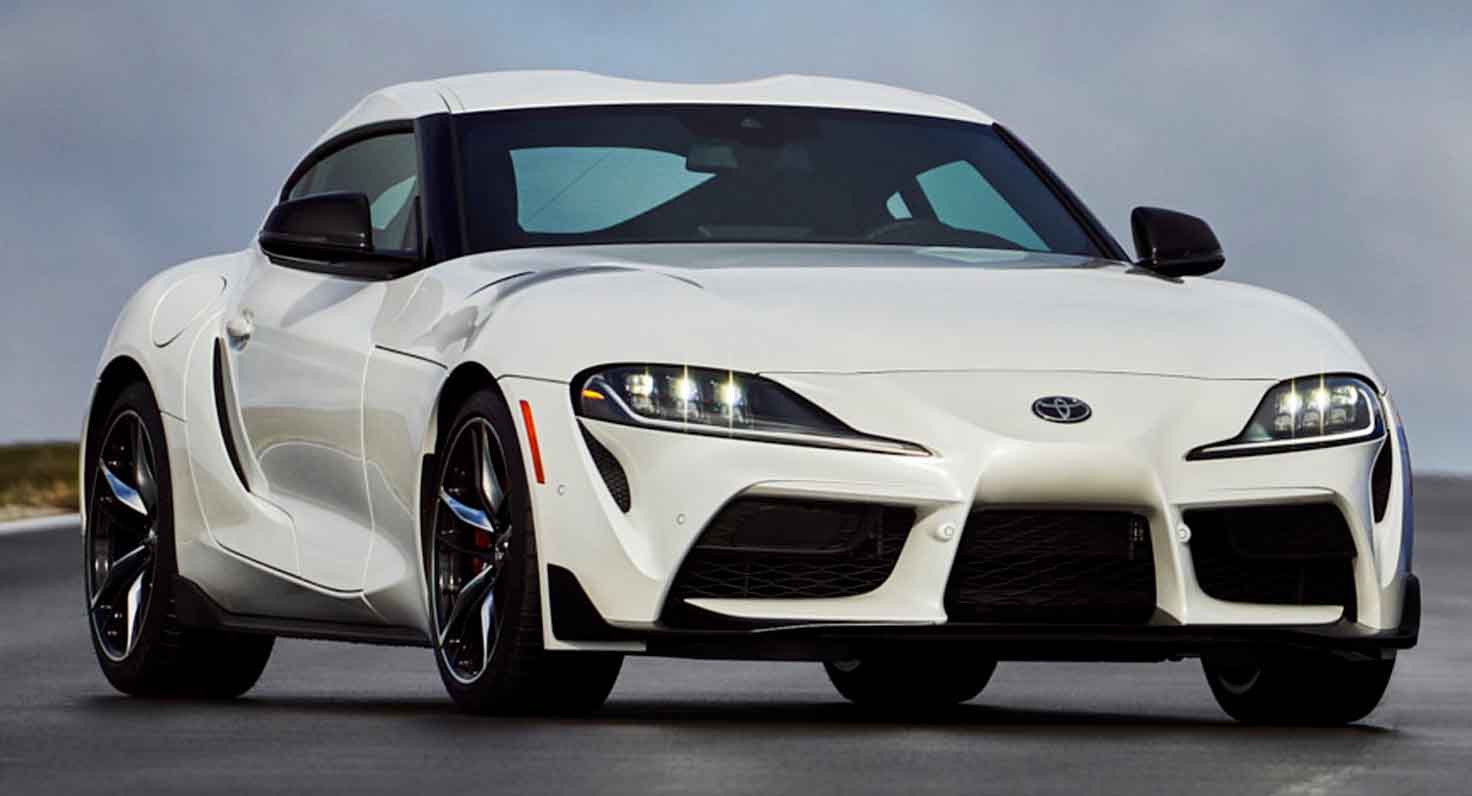
In the fourth-gen Supra, designing the cockpit around the driver yielded a large upper center console, prominently angled toward the driver and placing controls and displays within easy view and reach. It was definitely a ’90s thing, and drivers loved it. The design, however, tended to isolate the passenger, who also had an awkward reach to the audio and climate controls.
The GR Supra brings a different approach to “driver-focused.” A horizontal dashboard theme, not unlike that in the Lexus brand’s LFA supercar and current LC flagship coupe, conveys a sense of openness and width. The low, narrow-section dash gives the driver expansive forward visibility, ideal for precisely placing the car in corners.
The lower center console tightly groups the shifter and essential controls for performance driving. The upper console has an asymmetrical shape, with the driver’s side bordered by a padded pillar that serves as a right leg bolster. The design envelops the driver, an effect amplified by the available contrasting interior colors in the Launch Edition.
The console design is open on the passenger side, which helps the passenger feel like part of the excitement and allows easy access to the multimedia / navigation system and climate control panel. The latter protrudes from the center dash, making operation easy without averting eyes from the road.
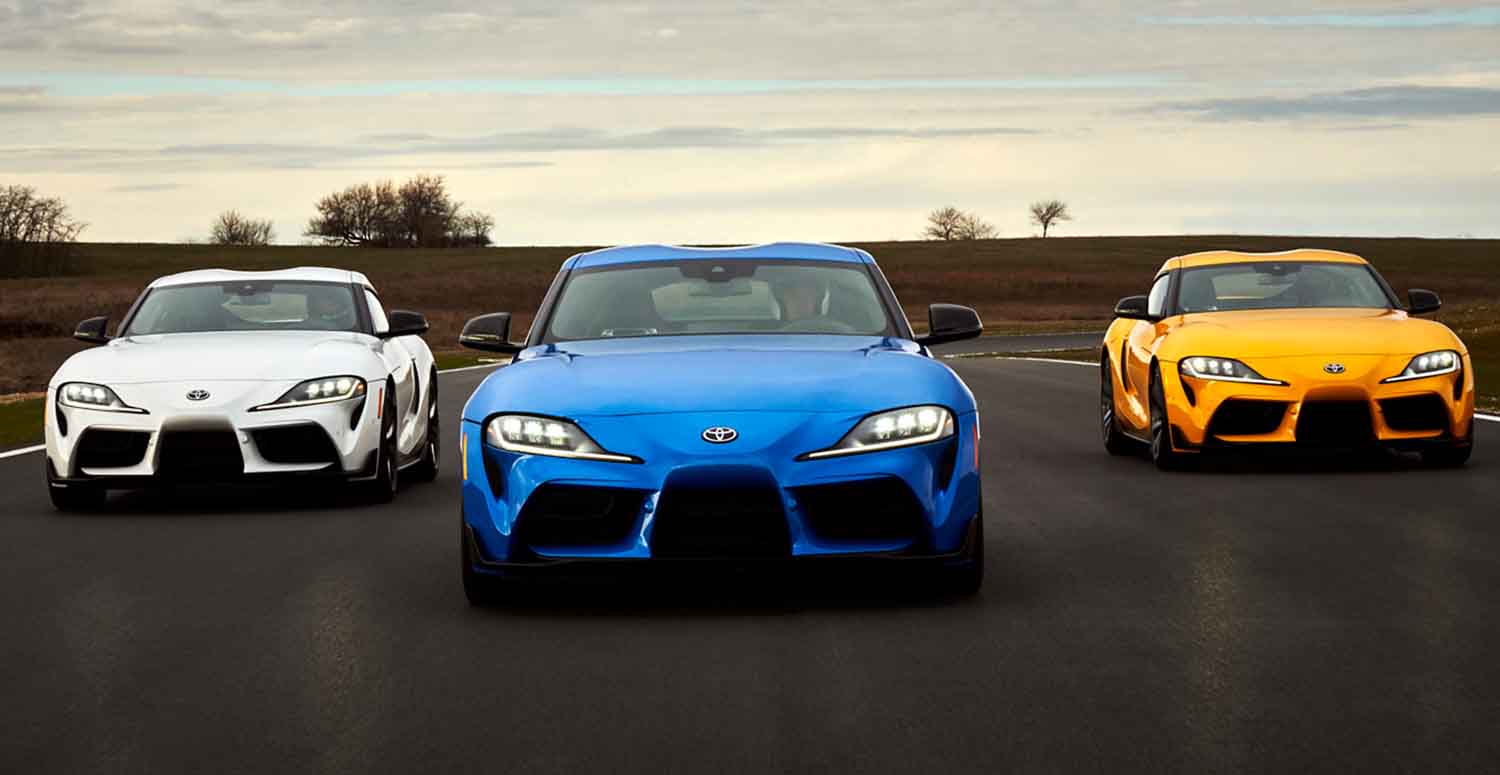
The Supra’s Sport seats, featuring integrated head restraints and shoulder bolsters, were inspired by racing seats. The Supra 3.0 will come with Alcantara-trimmed power seats with memory, while the 3.0 Premium steps up to heated, leather-trimmed seats.
Tech That’s Worthy of the Design
Reflecting the GR Supra’s high-tech engineering and construction, its instrument panel is a high-definition TFT color display highlighted by a three-dimensional meter dial that seems to float over it. The single-meter design puts the vital performance information in one place, easily glanced through the small-diameter steering wheel.
The display’s easy-to-read layout puts multimedia information, including audio and available navigation, on the right side. A standard full-color head-up display in the Supra 3.0 Premium model projects vital driving and navigation information ahead of the driver. The Supra 3.0 Premium features a standard 8.8-in. multimedia display screen with navigation and Apple CarPlay, and a 12-speaker JBL Premium Audio system. The Supra 3.0 model has a 6.5-inch screen. Both systems are of course Bluetooth and USB-equipped.
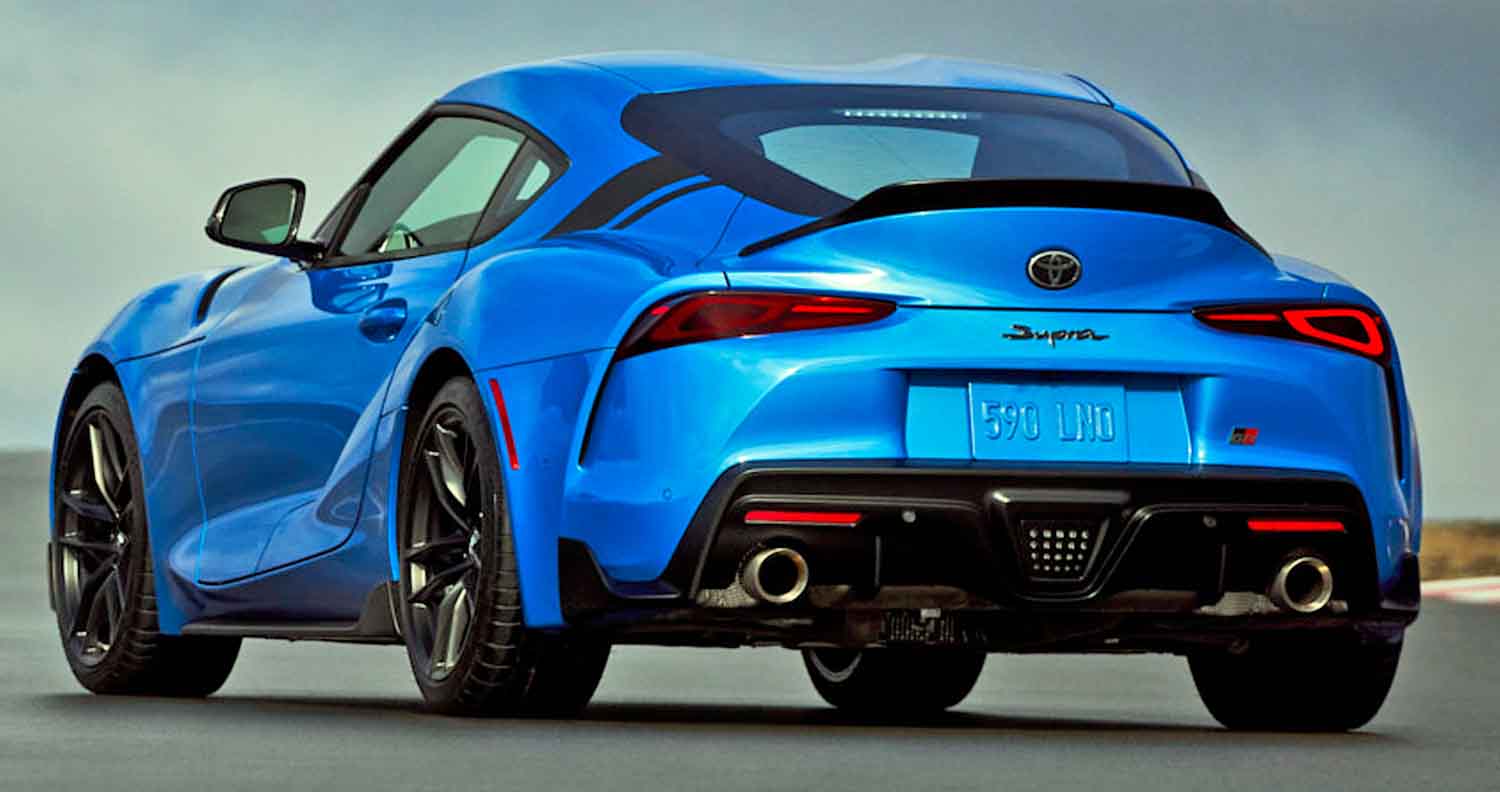
Standard luxury tech for both grades includes dual-zone automatic climate control, keyless entry and push-button start and rain-sensing windshield wipers.
Fun fact: The first Supra in 1979 had its own special navigational aid, a “mobile map light” that was stored in the center console, connected via coiled power cord and featured a magnetic back. Four decades ago, some gas stations still gave away free road maps.
“Heart-Pumping Excitement”
The 2020 GR Supra is the “Wow!” sports car that many enthusiasts have been waiting for. Its design is one that just had to be, seemingly willed by the model’s ardent fans outside and inside Toyota. It is an ideal reflection of the performance capability and the sheer joy of driving that the fifth-gen Supra offers.
